|
The Power to Win
Detroit Diesel Division of General Motors in World War Two
Detroit, MI
1938-1988 as part of GM.
Currently it is the Detroit Diesel Corporation.
This page updated 3-28-2024.
Detroit Diesel
World War Two Production: Detroit
Diesel built an estimated 193,000 engines during the Second World War.
These included one, two, three,
four, and six-cylinder two-stroke in-line diesel engines. They
were built for military use in four
types of tanks and tank destroyers, eleven different types of landing
craft, and unknown number of applications providing auxiliary ship's
power, engines for stationary generators, tugboat propulsion, and earth
moving equipment.
The only reliable World War Two production
numbers available are from the current Detroit Diesel Corporation
website, which states that 57,892 engines were built in 1943. General
Motors data indicates the Corporation built 198,000 diesel
engines during the war. My research indicates that Electro-Motive
and Cleveland Diesel combined built 5,000 diesel engines, which gives the 193,000 estimated for Detroit Diesel. My
research also indicates that the six cylinder 6-71 engine was the major
production model of the five sizes used by the military. Below are
tables that show that 43,060 6-71 engines were used
in tanks and another 52,525 6-71 engines were utilized in landing craft for both
propulsion and ships' power. This leaves another estimated 95,907 Detroit Diesel
engines built during the Second World War where I have not been able to
identify the application. Note that the number of engines
provided for landing craft just about equaled a year's production at the
rate obtained in 1943.
Detroit Diesel engines were in high demand.
In some cases, as is shown in the Table 3 below, gasoline powered engines
had to be substituted by landing craft builders. Even in far away
Australia, the Detroit Diesel was in demand by the Army and Air Force for
their 40-foot utility boats. Only when Detroit Diesel engines
became available out of scrapped tanks in the country could they get
some.
Detroit Diesel employed around 4,300 employees
during the war.
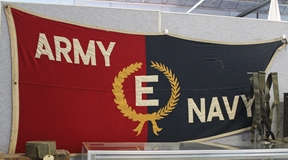
Detroit Diesel Division of General Motors won
the Army-Navy "E" Award one time during WWII.
Nomenclature Confusion: Sometimes in the current literature Detroit Diesel will be referred to as a GM or GMC diesel. The
GMC Truck and Coach Division (Previously Yellow Truck and Coach until
mid-1943 was a company in which GM had majority stock holdings.) did not
make diesel engines. Before and after WWII, Yellow Truck and Coach
/ GMC used Detroit
Diesel 6-71 engines in the Silversides Greyhound buses it was making.
GMC or previously Yellow only built gasoline powered engines. If
just identified as a GM diesel engine, it would still be a Detroit
Diesel.
General Motors Diesel Power: GM
had four diesel divisions during the Second World War. Detroit
Diesel built 15 to 250 hp diesels, Cleveland Diesel built 150 to 2,000 hp
diesels, Electro-Motive built locomotive and some ship
diesels, and the Diesel Equipment Division supplied components for
the other three divisions. As can be seen in the ads below, GM
combined the marketing of the engine-producing divisions, although the one ad is all about Detroit Diesel producing its
100,000th engine for the war effort.
|
Table 1 - Detroit Diesel
World War Two Engines |
| Model |
Displacement (Cubic Inches) |
Cylinders |
Maximum Horsepower |
Comments |
| 1-71 |
71 |
1 |
10 |
|
|
2-71 |
142 |
2 |
68 |
Inline Engine |
| 3-71 |
213 |
3 |
113 |
Inline Engine |
| 4-71 |
284 |
4 |
160 |
Inline Engine |
| 6-71 |
426 |
6 |
238 |
Inline Engine |
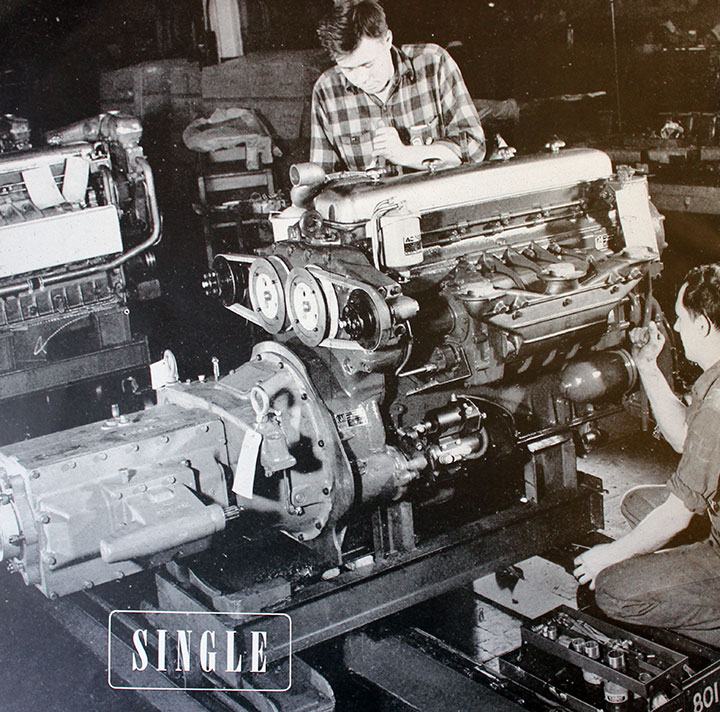
The basic Detroit Diesel 6-71 engine:
35,351 of these provided the basis for powering 20,855 tanks and tank
destroyers as singles or in pairs. It also supplied 52,525 6-71s
as the basic building block for 33,549 landing craft as singles and
quads.
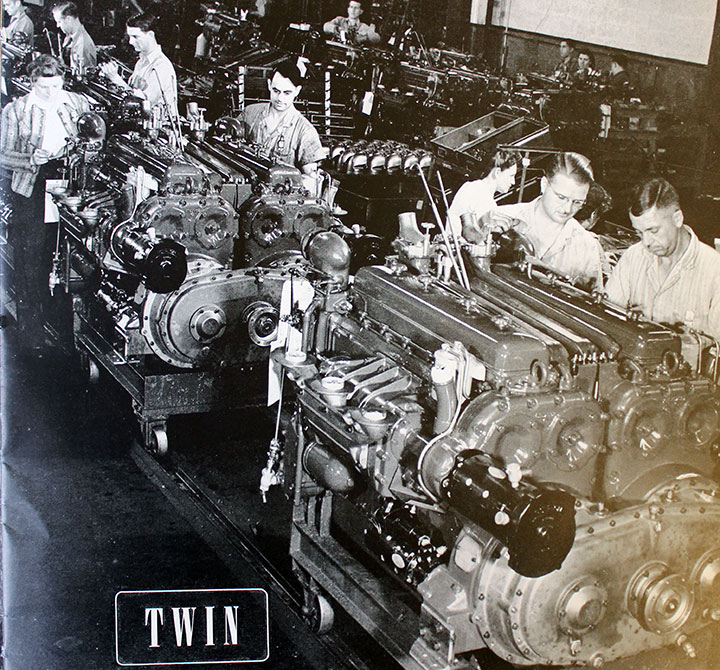
This is a view of Detroit Diesel 6046 tank engines coming down the
assembly line. They would be used in the M3, M4A2, and M10.
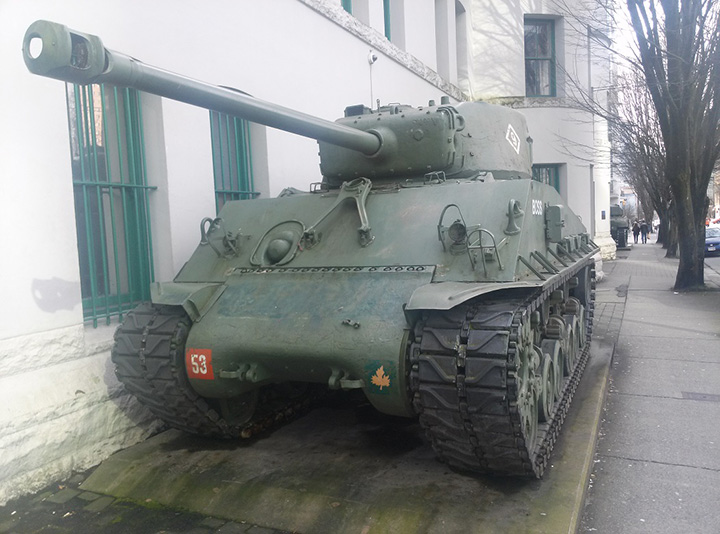
This M4A2(76)HVSS Fisher Body Grand Blanc
Tank Arsenal with serial number 69192 and registration number 30129671, was
built in April 1945. It was powered by the Detroit Diesel 6046 engine.
It can be seen outside the Beatty Street Drill Hall in Vancouver, BC.
It was one of 7,508 M4A2s built by Fisher Body. Photo courtesy of David Jackson, Jr.
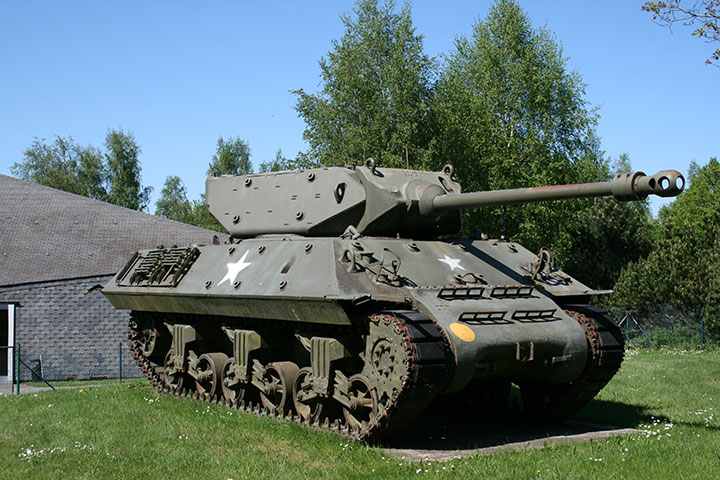
This is one of 4,993 M10 Tank Destroyers. It was powered by two 6-71
225 hp diesel engines driving one driveshaft designated the 6046 that
was built by the Fisher Body Division of GM at its Tank Arsenal in Grand
Blanc, MI. Fisher Body-built M10s were deployed overseas while the
Ford-built M10A, with a gasoline engine, stayed in the US during the war.
Consequently, any M10 seen in a photo in combat in Europe or the Pacific
was powered by Detroit Diesel. This is one of 1,648 that was
provided to the British during 1944 and 1945 and is also one of 1,017
that was converted to an M10C with a British 17-pounder main gun to
replace the original 3 inch gun. The 17 pounder can be identified
by the long barrel and the distinctive muzzle brake. As this was a
British operated M10C, the US stars on the vehicle are incorrect.
Author's photo from the Bastogne Historical Center in Belgium added
10-12-2015.
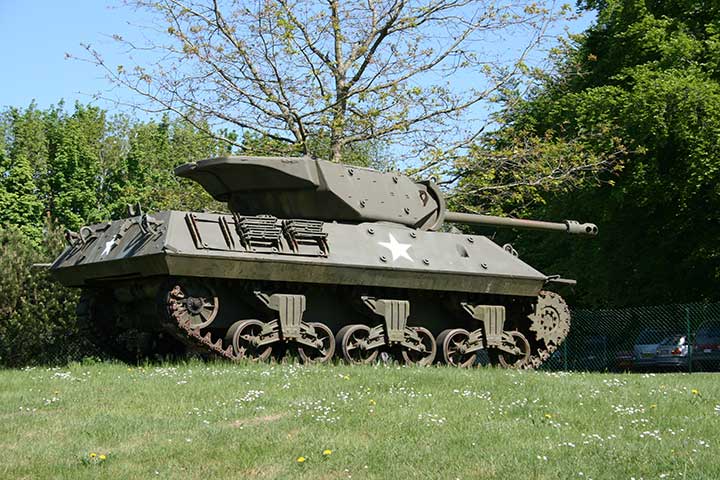
The Free French army in Europe operated 255 Detroit Diesel powered M10s
and the USSR received fifty-two of them in 1943. Author's photo added
10-12-2015.
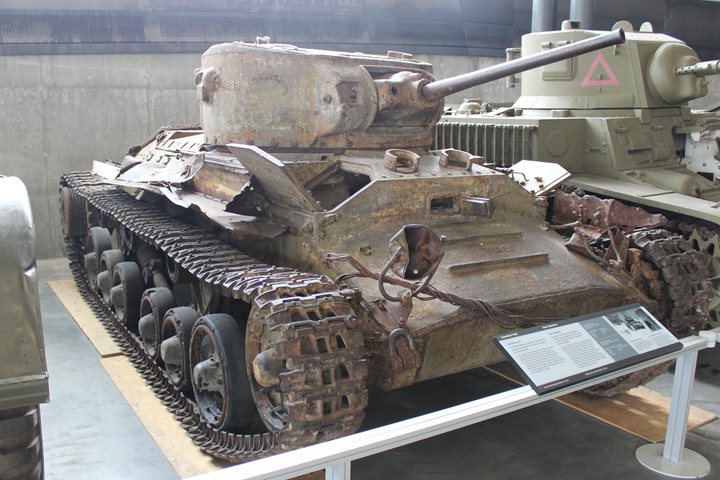
This is one of 3,981 Valentine tanks built
in both Canada and Great Britain that used a Detroit Diesel 6-71 engine.
Author's Photo from the Canadian War Museum added 1-8-2017.
|
Table 2 - Detroit Diesel
Engine World War Two Tank Applications |
|
Armored Vehicle |
Number
built |
Type
Engine |
Engines per tank |
Total
Engines |
6-71
Engines per tank |
Total
6-71 Engines |
Comments |
|
British and Canadian Valentine |
3,981 |
6-71
|
1 |
3,981 |
1 |
3,981 |
|
|
British Archer SP Anti-Tank with 17 pounder main gun |
665 |
6-71 |
1 |
665 |
1 |
665 |
|
| M3A3
Grant/Lee |
322 |
6046 |
1 |
322 |
2 |
644 |
The
6046 was two 6-71 engine blocks working together as one power
plant. |
| M3A5
Grant/Lee |
591 |
6046 |
1 |
591 |
|
1,182 |
The
6046 was two 6-71 engine blocks working together as one power
plant. |
| M4A2
Sherman Tank |
10,968 |
6046 |
1 |
10,968 |
2 |
21,936 |
This
was about 20% of the total M4 Sherman production in WWII.
The US Army preferred gasoline powered tanks, since
that was the fuel it normally used in its vehicles. The
Detroit Diesel powered M4A2 Shermans served either with the USMC,
which had access to US Navy diesel fuel, or were sent overseas as
part of Lend Lease. |
| M10
Tank Destroyer |
4,993 |
6046 |
1 |
5,368 |
2 |
10,736 |
The
M10 Tank Destroyer was a US Automobile Industry product being
built by the GM Fisher Body Division at Grand Blanc, MI. |
|
Totals |
21,520 |
|
|
21,520 |
|
39,144 |
This
does not include any spares. |
The Landing Craft, Vehicle Personal (LCVP)
The LCVP or the Higgins Boat, as named after its inventor Andrew Jackson
Higgins, was considered by Dwight D Eisenhower to be one of the most
important weapons of World War Two. With its low draft,
which allowed it to come right up on to the beach, and its
innovative front drop ramp let the assault troops exit
forward right onto the beach. With the previous type of landing craft,
it was difficult for the troop to climb up over the sides with heavy combat
packs. Then, jumping onto the beach or into the
water near the beach could bring broken bones or drowning. While
its concept seems obvious, in retrospect it was truly a game changer for
allied forces. (Actually, it was based on Japanese landing craft
that already had a ramp in the front of the craft.)
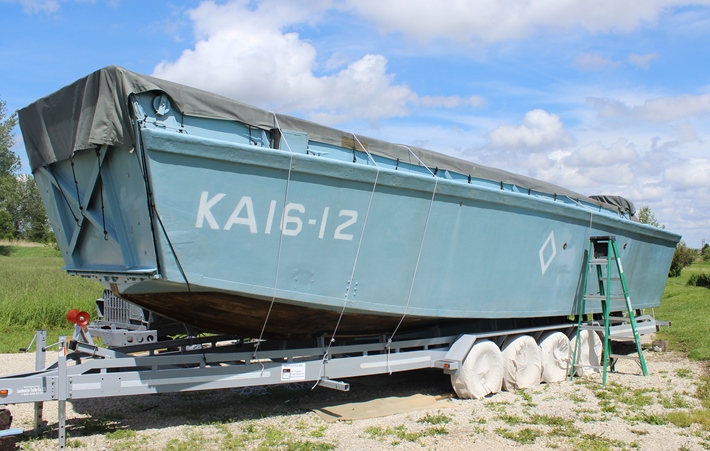
23,353 LCVPs were built in the United States during World
War Two by Higgins
Industries, Chris-Craft, and four other companies. The one shown
above was built by Higgins and is one of only eight original LCVPs built during World War Two still in existence.
What
makes this LCVP significant, owned by the Roberts Armory in Rochelle,
IL, is that it was one of the 19,353 that came equipped with a Gray
Marine/Detroit Diesel 6-71 engine. Charles Roberts, owner of
Roberts Armory, a
private museum, has done a remarkable job of restoring this all wooden
vessel to the way it looked when it was built in 1945. Author's photo added 9-18-2015.
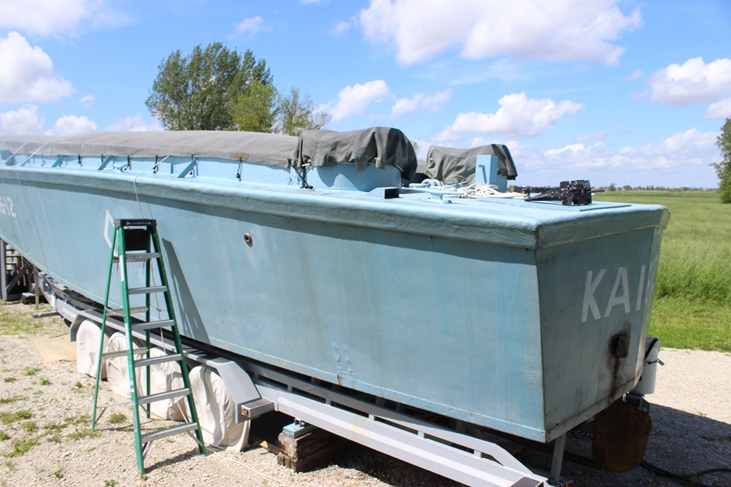
The LVCP was 36 feet long, made of plywood,
and could transport 32 infantrymen directly to the beach. The engine was at the rear
of the craft. Charles Roberts allowed me to photograph the engine
bay with its Gray Marine/Detroit Diesel 6-71 engine when I visited the
museum on Memorial Day, 2015. Due to high winds, he did not take
the tarp off completely as he normally does to let the public look at
the landing craft. I thank Charles for taking the time to show me
and let me photograph the engine. Author's photo added 9-18-2015.
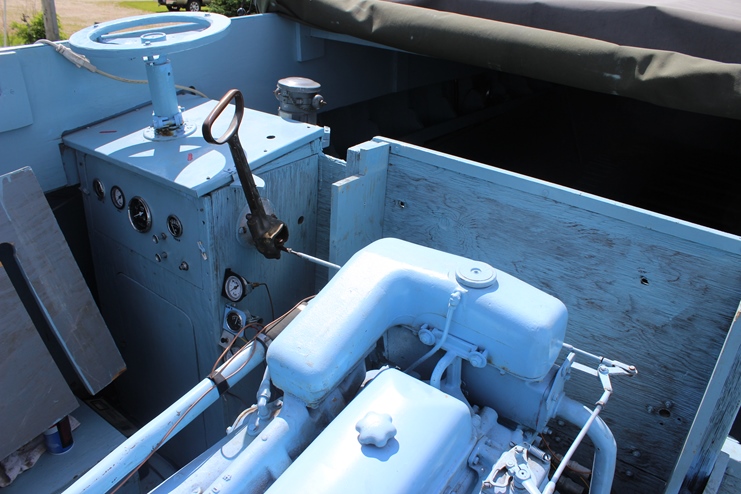
Standing in the right rear of the engine bay, the coxswain's station with steering wheel, the
throttle, and a few gauges were first to be photographed. Note that there is a simple throttle
linkage that runs across the front of the
engine, in front of the water to water to water/alcohol heat
exchanger. Then it connects to the governor on the side of the
engine. Author's photo added 9-18-2015.
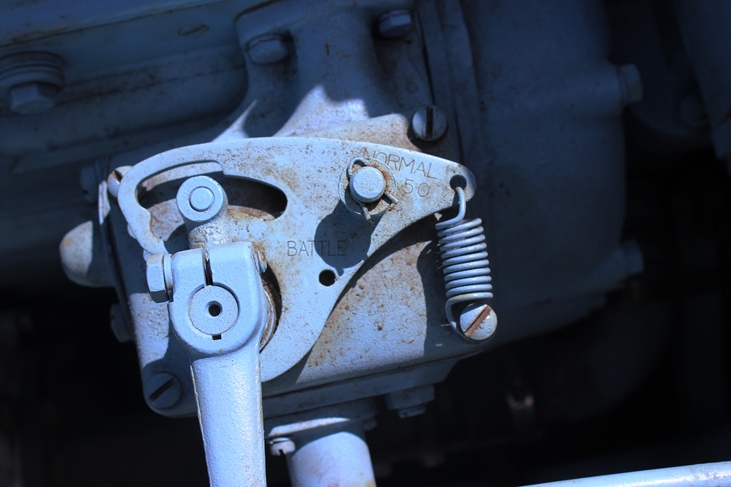
The governor has two settings, "Normal" at the right top, and then
"Battle" which is partially obscured by the shadow of the set screw shadow.
Author's photo added 9-18-2015.
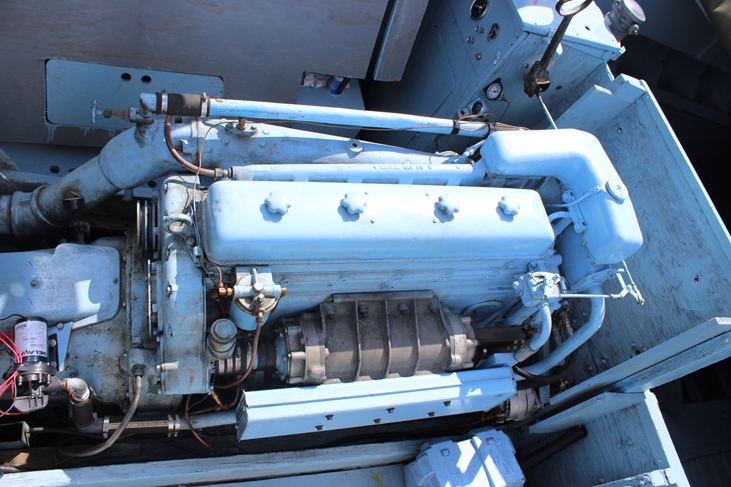
The front of the LCVP and engine are to the
right. At the bottom of the photo is the air intake and filter,
then the Roots supercharger with a Delco-Remy Plant Five rotor, the engine block, and then on far side the
exhaust. Author's photo added 9-18-2015.
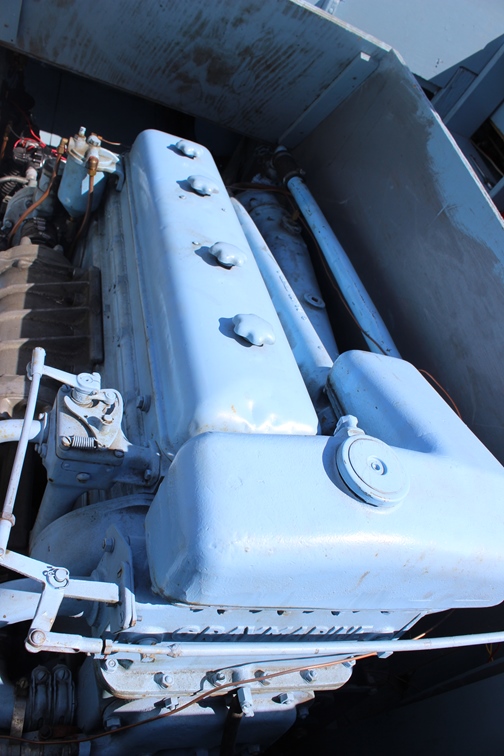
Looking from front to back one can see the
name Gray Marine on the front. While Detroit Diesel provided the
operating engine, Gray provided the water to water/alcohol heat
exchanger with its name on it. Over 95% of the content of the
engine was provided by Detroit Diesel. Author's photo added
9-18-2015.
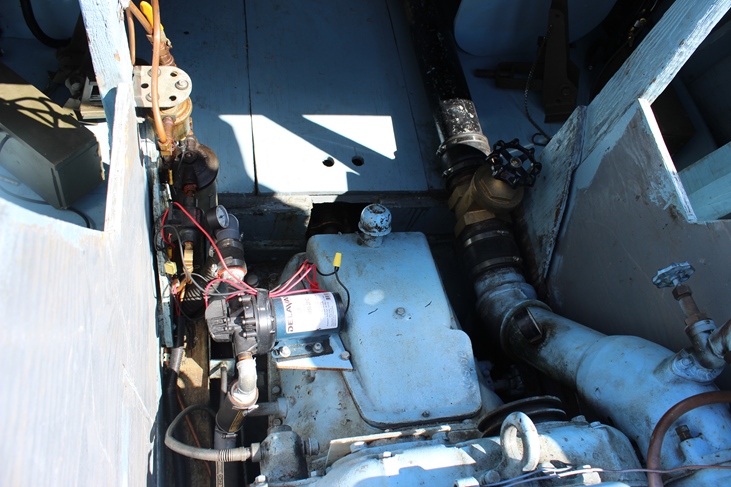
This view is looking down at the rear of the engine with
the fuel system on the left and the exhaust on the right. Author's
photo added 9-18-2015.
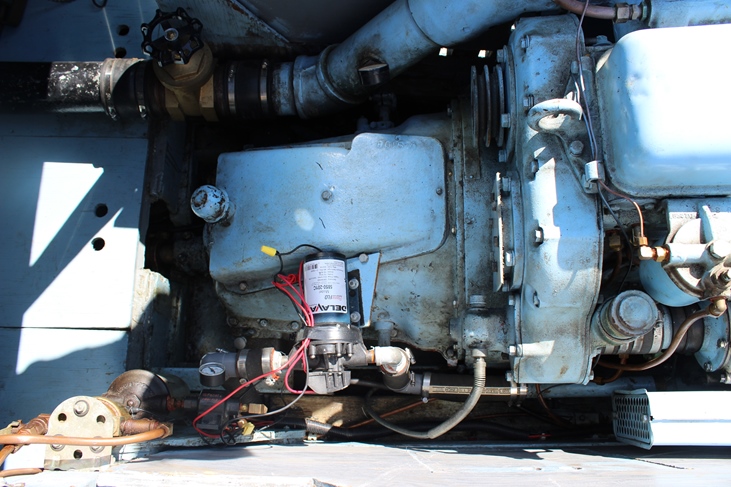
This photo looks down at the back of the
engine from the right or starboard side of the LCVP. Author's
photo added 9-18-2015.
The Gray Marine 64HN9/Detroit Diesel 6-71
Marine Engine: In looking at the literature that describes the
type engines used in many of the landing craft of the Second World War,
they are described as a Gray Marine 225 hp diesel engine. Gray
Marine Motor Company in Detroit, MI modified Detroit Diesel 6-71 engines
for marine use on landing craft by adding a transmission and a heat
exchanger as the central part of the cooling system. Gray also
added a governor, air intake with silencer, and a flywheel assembly to
power such items as a bilge pump in the boat. Because Gray
was the last company to "touch" the modified Detroit Diesel 6-71 engine, it was identified as
the builder. However,
Detroit Diesel built up the engines in its plant and probably had 90% of the
value in the final product. Therefore, in the
information on this page I have designated it as the Gray Marine
64HN9/Detroit Diesel 6-71, to show that Gray modified the Detroit
Diesel 6-71 engine. They both get credit for their portion of the
final product.
Also, the current literature shows the Gray
Marine 64HN9/Detroit Diesel 6-71 as a 225 hp engine rather than the
238 maximum hp shown in the table above. The 225 hp was a net hp
rating.
|
Table 3 - Detroit Diesel
Engine World War Two Landing Craft Applications - Updated
3-28-2024 |
| Type
Landing Craft |
Number
built |
Type
Engine |
Engines per Landing Craft |
Landing Craft using Detroit Diesel Engines for propulsion |
Number
of Detroit Diesel Engines for propulsion |
Number
of 6-71 for ship's power |
6-71
Engines Usage |
2-71 Engine Usage |
Comments |
| LCP(L) |
2,193 |
Various including
Gray Marine 64HN9/Detroit Diesel 6-71 |
1 |
1,097 |
1,097 |
|
1,097 |
|
Assumes 50% Gray
Marine 64HN9/Detroit Diesel 6-71 as that was the preferred
engine. |
| LCP(R) |
2,572 |
Various including
Gray Marine 64HN9/Detroit Diesel 6-71 |
1 |
1,286 |
1,286 |
|
1,286
|
|
Assumes 50% Gray
Marine 64HN9/Detroit Diesel 6-71 as that was the preferred
engine. |
| LCV |
2,366 |
Various including
Gray Marine 64HN9/Detroit Diesel 6-71 |
1 |
1,183 |
1,183 |
|
1,183
|
|
Assumes 50% Gray
Marine 64HN9/Detroit Diesel 6-71 as that was the preferred
engine. |
| LCVP |
23,353 |
Gray Marine
64HN9/Detroit Diesel 6-71 or Hudson built Hall-Scott 210 hp
gasoline powered Invader |
1 |
19,353 |
19,353 |
|
19,353 |
|
Some LCVPs received the Hudson built Hall-Scott 210 hp gasoline
powered Invader engines due to the fact Detroit Diesel could not
supply all of the engines the military was requesting.
Hudson built 4,000 of these so I have used that number to
subtract from 23,353. |
|
LCS(S) Mk 2
|
340 |
Gray Marine
64HN9/Detroit Diesel 6-71 |
1 |
340 |
340 |
|
340 |
|
|
| LCM(3) |
8,631 |
Gray Marine
64HN9/Detroit Diesel 6-71 or
Kermath 225 hp six cylinder gasoline engines |
2 |
4,223 |
8,446 |
|
8,446 |
|
Assumes 50% Gray
Marine 64HN9/Detroit Diesel 6-71 as that was the preferred
engine. |
| LCM(6) |
2,513 |
Gray Marine
64HN9/Detroit Diesel 6-71 or
Kermath 225 hp six cylinder gasoline engines |
2 |
1,885 |
3,770 |
|
3,770 |
|
Assumes 75% Gray
Marine 64HN9/Detroit Diesel 6-71 as that was the preferred
engine. |
|
LCC Mk 1 |
60 |
Gray Marine 66TL1/Detroit Diesel 6-71 |
2 |
120 |
120 |
|
120 |
120 |
(2) Generators with DD 2-71 engines |
|
LCC Mk 2 |
30 |
Gray Marine 66TL1/Detroit Diesel 6-71 |
2 |
60 |
60 |
|
60 |
60 |
(2) Generators with DD 2-71 engines |
| LCT(5) |
470 |
Gray Marine 64TL1/65TL1 (RH x
2/LH x 1) or 64TL2/65TL2 (RH x 2/LH x 1) or 64YTL/65YTL (RH x 2/LH
x 1)/Detroit Diesel 6-71 |
3 |
470 |
1,410 |
|
1,410 |
|
|
| LCT(6)
|
960 |
Gray Marine
64YTL/65YTL (RH x 2/LH x 1)
or 64YTL3/65YTL3 (RH x 2/LH x 1) /Detroit Diesel 6-71 |
3 |
960 |
2,880 |
|
2,880
|
|
|
| LCI(L) |
923 |
Detroit Quad
Diesels (6051) |
2 |
923 |
1,846 |
|
7,384 |
1,846 |
The 6051 was the
designation for four 6-71s tied together. The ship's power
on the LCI was provided by two 2-71 engines driving 20KW
generators. |
| LCS(L) |
130 |
Detroit Quad
Diesels (6051) |
2 |
130 |
260 |
|
1,040 |
260 |
The ship's power
on the LCS(L) was provided by two 2-71 engines driving 20KW
generators. There is still one LCS(L) in existence at Mare
Island in San Francisco, CA. See the links page for more
information. |
| LST |
1,052 |
Detroit Diesel
6-71 |
3 |
|
0 |
3,156 |
3,156 |
|
The ship/s power
on the LST was provided by three 6-71 engines driving 100KW
generators. |
| Totals |
45,593 |
|
|
32,030 |
42,051 |
3,156 |
51,525 |
2,286 |
This
does not include any spares. Also, this is almost a year's
production for Detroit Diesel during the WWII. |
| Type
Landing Craft |
Number
built |
Type
Engine |
Engines per Landing Craft |
Landing Craft using Detroit Diesel Engines |
Number
of Detroit Diesel Engines |
Number
of 6-71 for ship's power |
6-71
Engines Usage |
2-71
Engines Usage |
Comments |
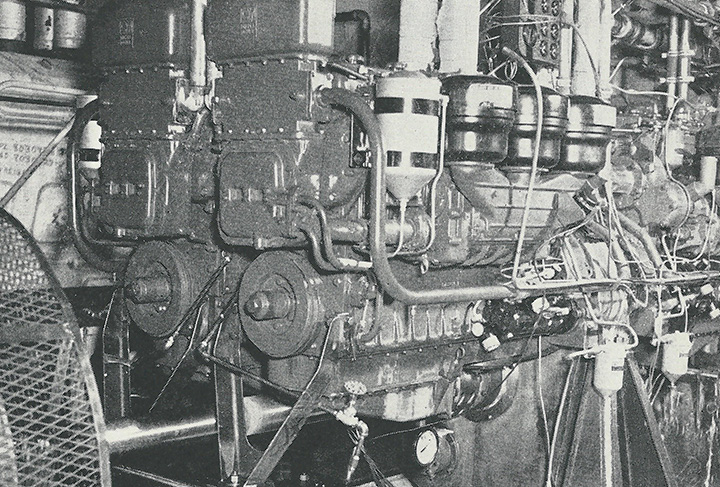
This is the original Quad Four Engine
that was originally developed by Electro-Motive Division in LaGrange, IL
in February 1942. After it was proven feasible, Detroit Diesel
picked up the manufacturing for use in the LCI(L) and LCS(L).
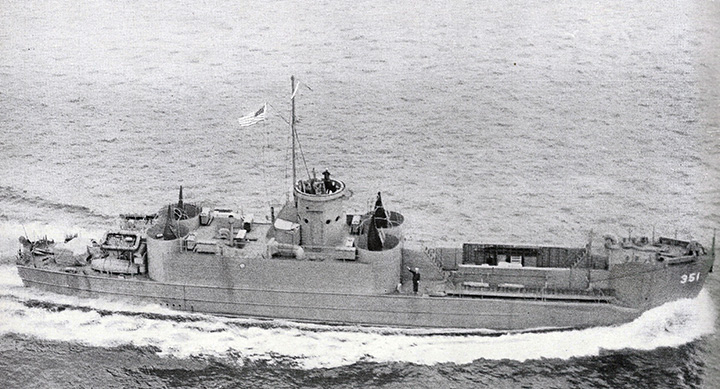
An LCI(L) that used two 6051 Quads for eight
6-71s. They provided propulsion to two propellers, and then two more Detroit
Diesel 6-71s, running generators to provide electrical power for the rest
of the ship's power. The LCI(L) could carry an entire army
infantry company and deliver it to the beach, ready for combat as a
unit.
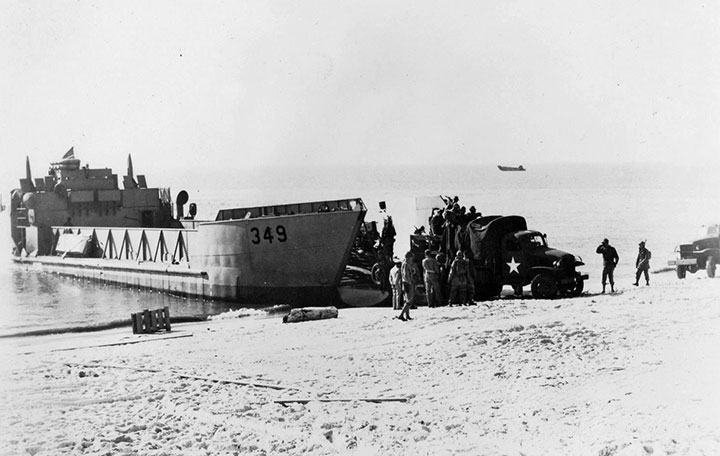
Here, an LCT unloads its cargo including a GMC 2-1/2
ton CCKW truck on the beach.
The LCT got to the beach powered by three Detroit Diesel 6-71 engines driving three
propeller shafts.
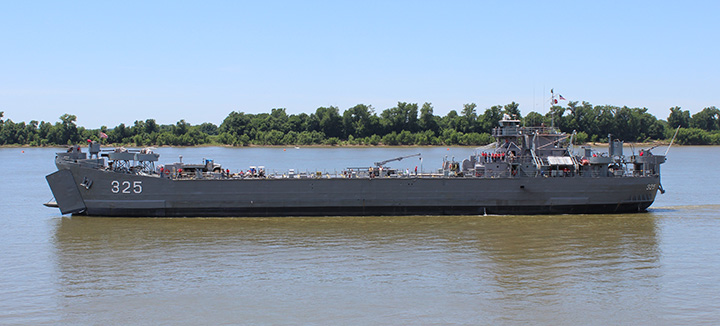
1,052 Landing Ship Tanks (LST) each utilized
three 6-71 Detroit Diesel engines for ship's power. Half of the LSTs had propulsion provided by GM's Electro-Motive Division.
This is the only LST still operating. LST-325 is seen here just a
mile downstream from her berth along the Ohio River in Evansville in
June of 2015. Author's Photo added 10-12-2015.
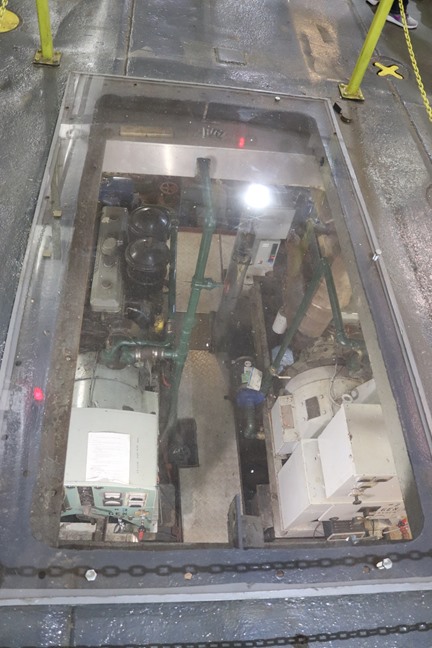
Here are two of the three 6-71 ship's power
engines on LST-325 in Evansville, IN. Part of the tank level deck
has been cut open so visitors can look down to see the engines inside
the auxiliary engine room.
The hole is covered with Plexiglas for safety reasons, but also impairs
clear photos of the engines. The orientation is looking towards the
front of the ship. The engines, the electric generators, and the
controls can be seen for two of the engines. The third engine to
the right or starboard side of the ship is now a newer Cummins diesel
that currently runs power for the ship. Author's photo added
6-22-2018.
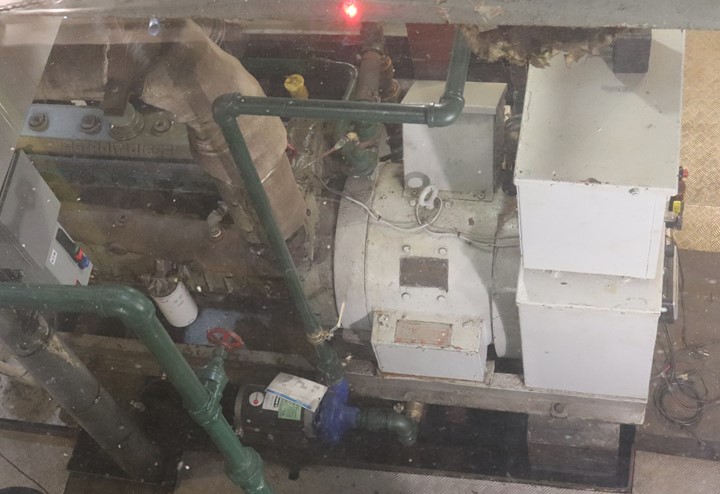
This is looking at the port side of
the middle 6-71. The name Detroit Diesel can be seen on the valve
cover. Author's photo added 6-22-2018.
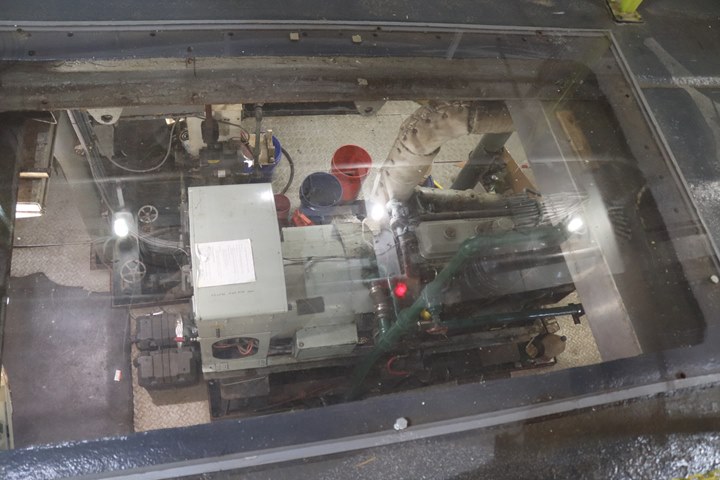
This is looking at the starboard side of the
port 6-71. The name Detroit Diesel can be seen on the valve cover.
Author's photo added 6-22-2018.
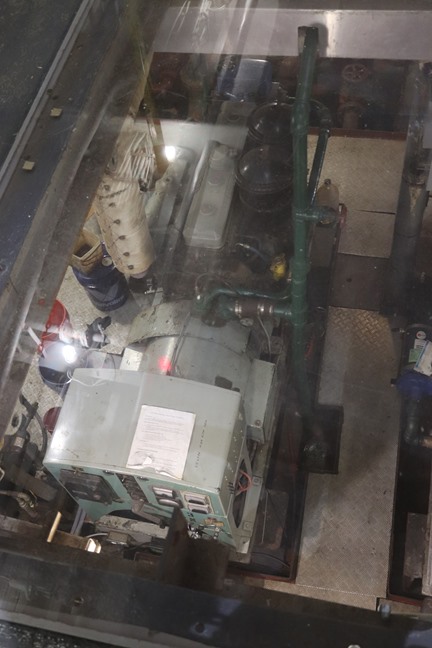
Author's photo added 6-22-2018.
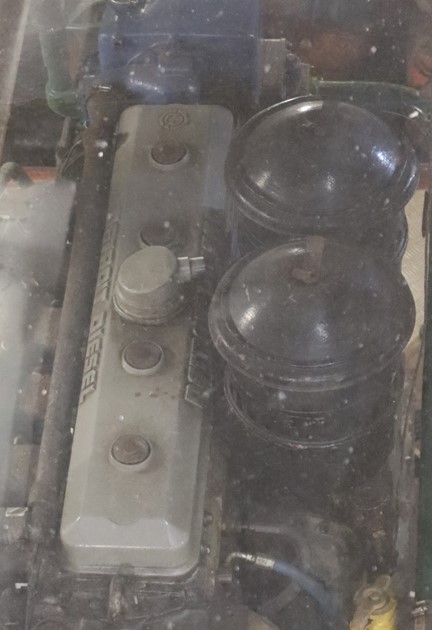
The name Detroit Diesel can be seen on the
valve cover of the port engine. Author's photo added 6-22-2018.


This ad has an artist's rendition of one of
the 1,052 LST's that were equipped with three Detroit Diesel 6-71s for
ship's power landing an M10 Tank Destroyer that was powered by two
Detroit Diesel 6-71s. All M10s deployed overseas were powered by
the 6-71 engine.

Detroit Diesel Fights
This 42 page booklet published by
Detroit Diesel in December 1943 states in its own words how it is
contributing to the winning of World War Two.
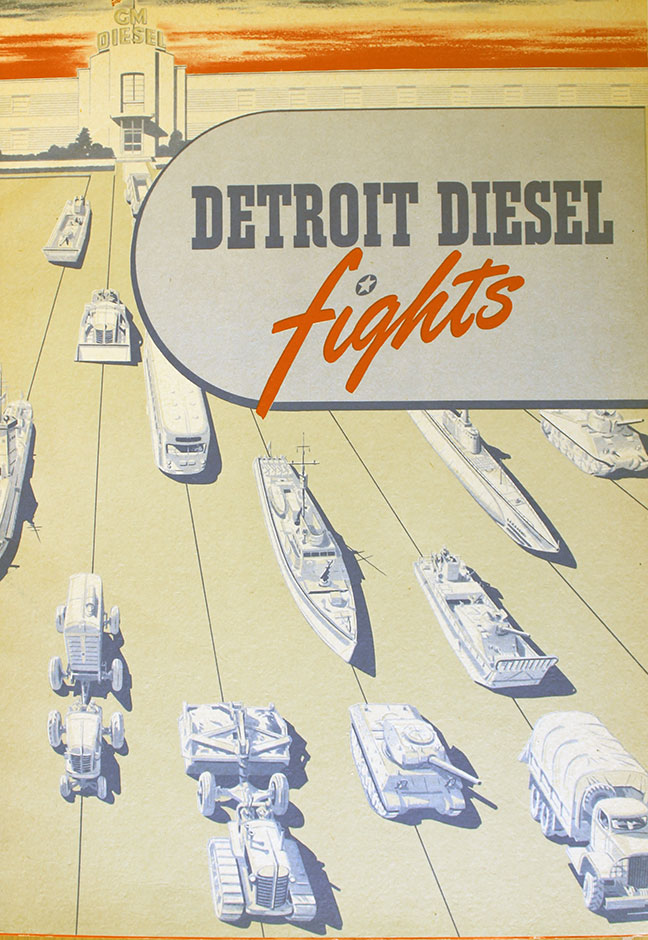
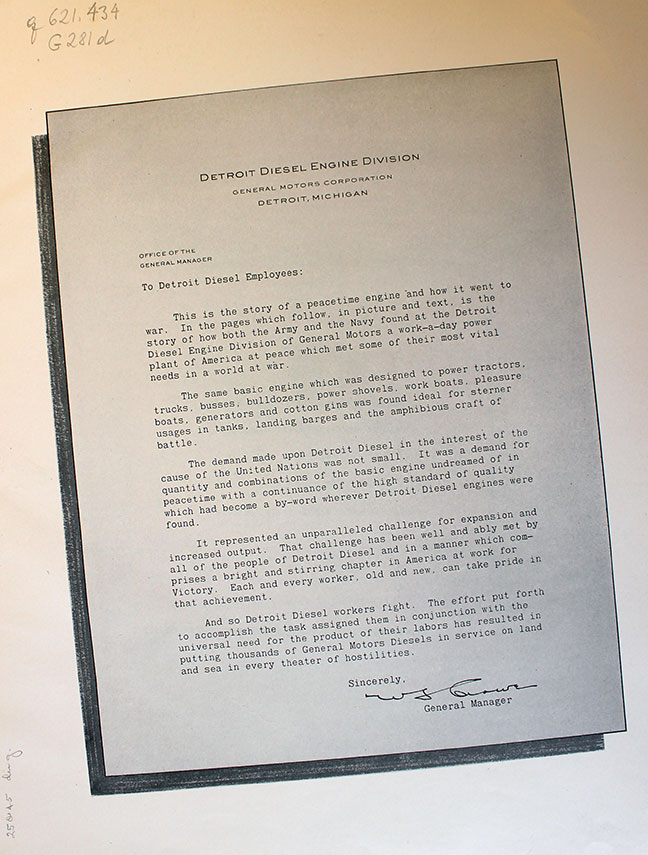
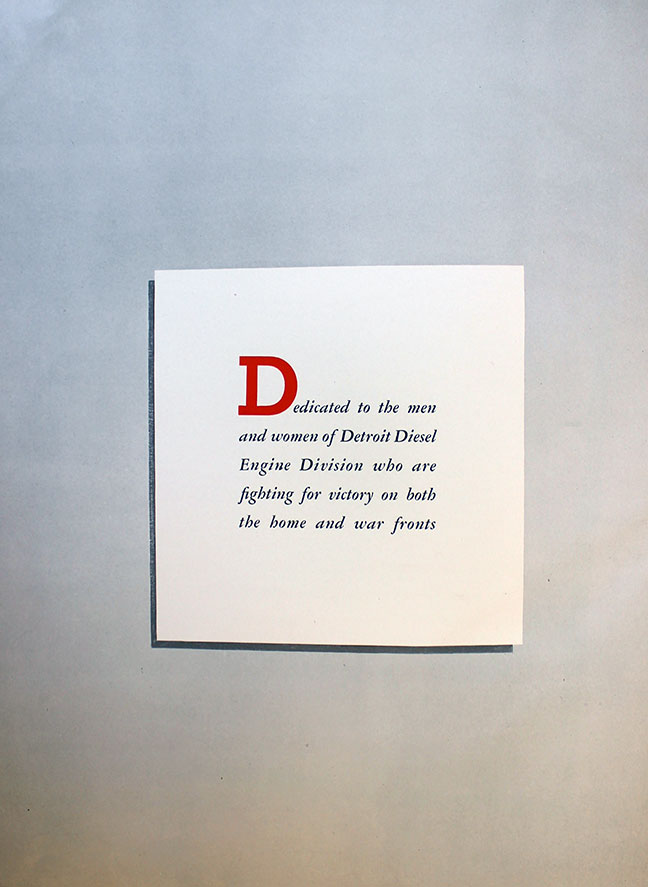
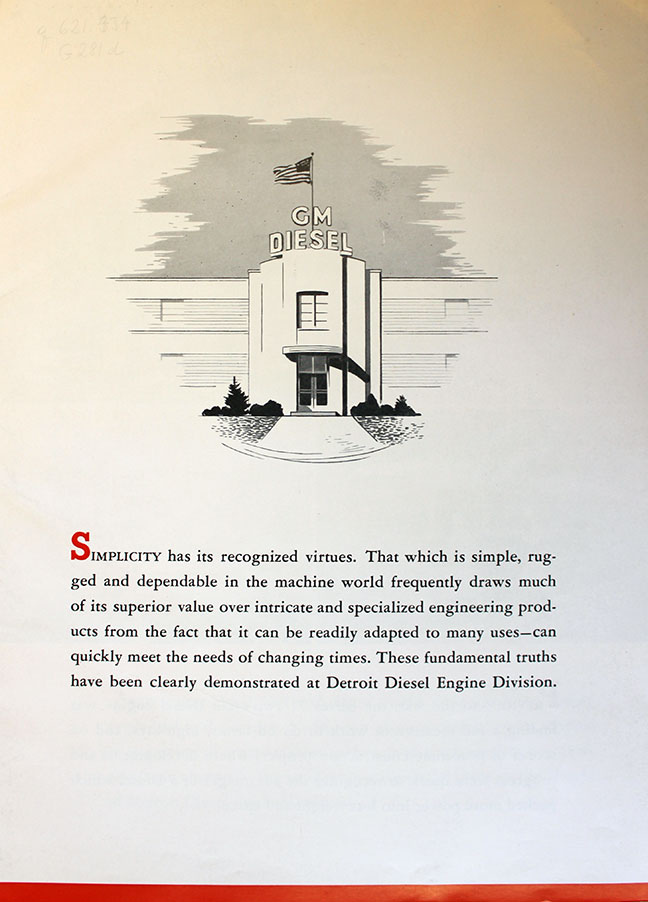
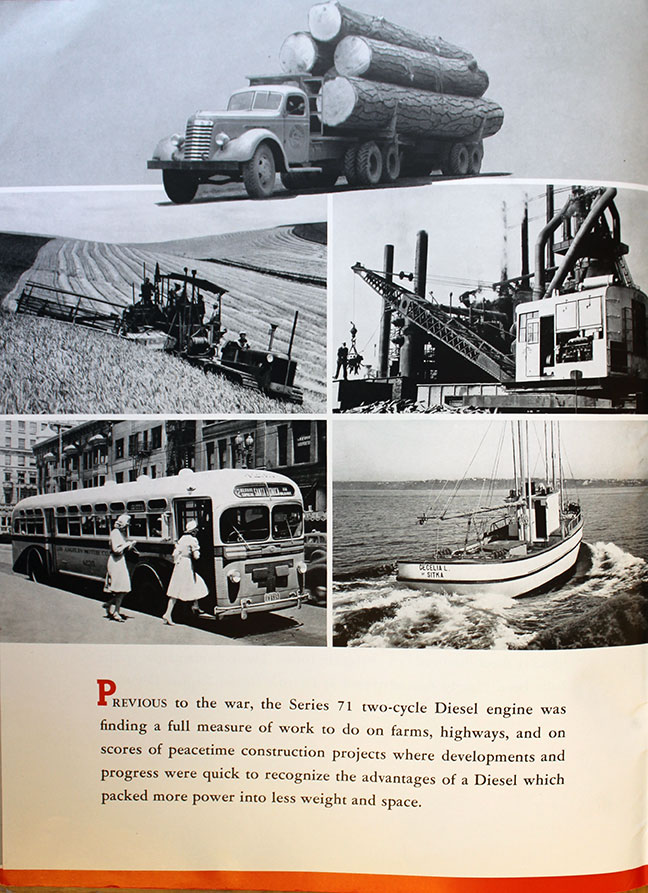
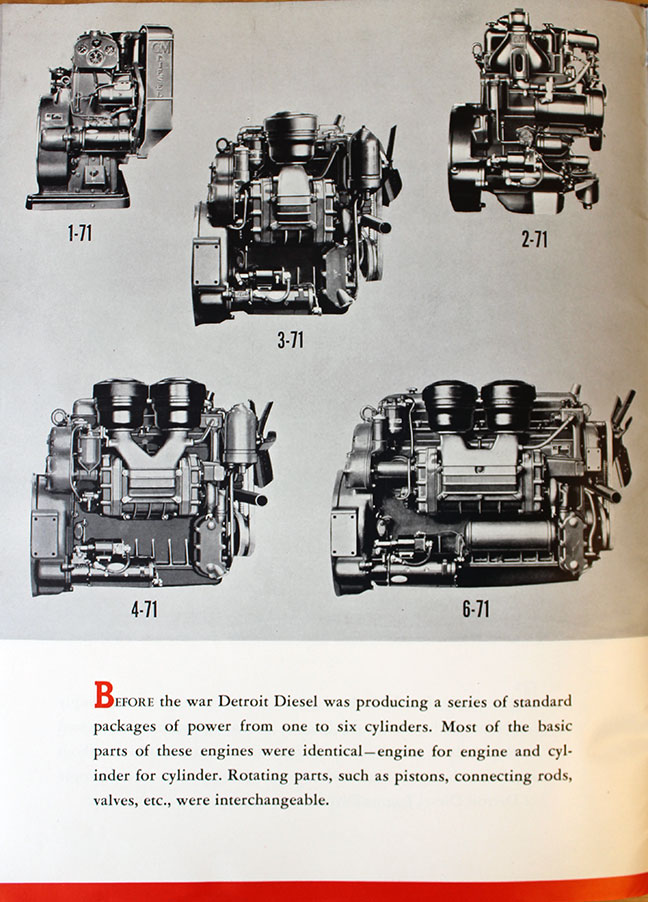
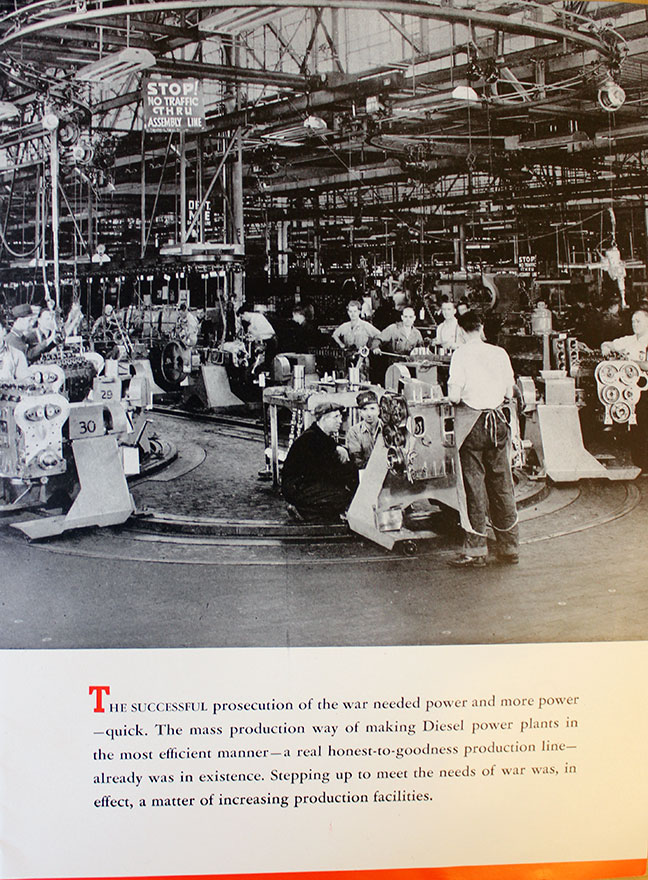
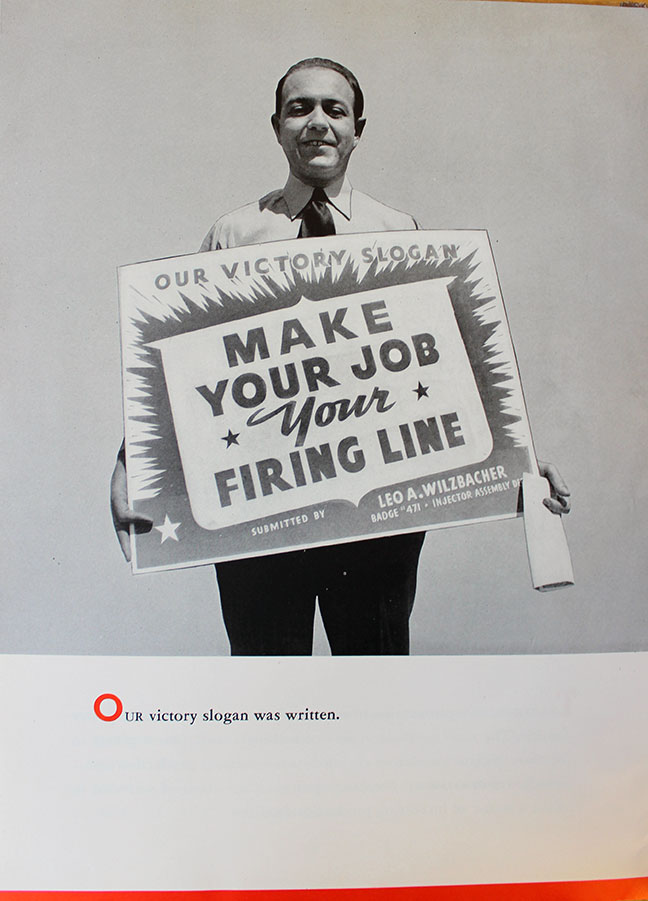
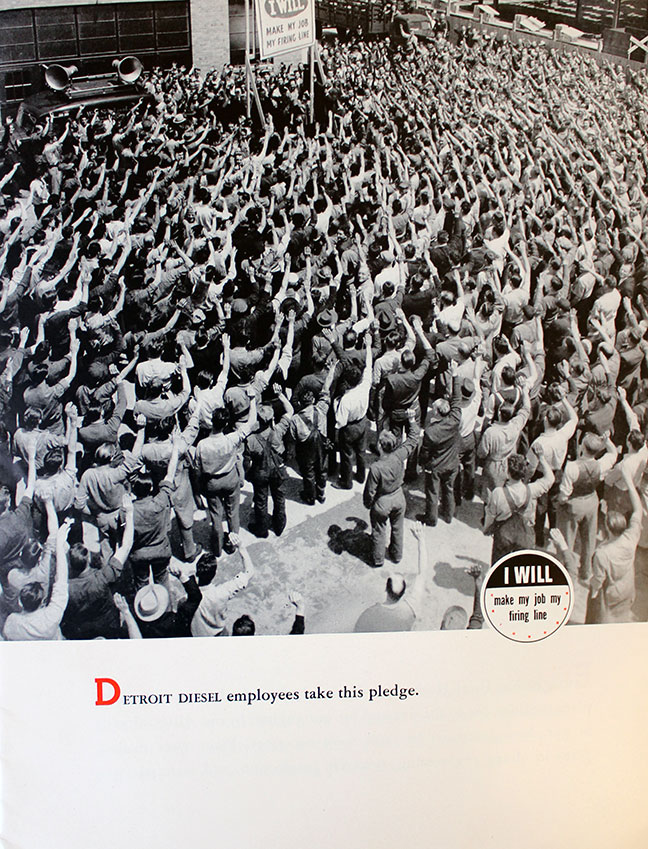
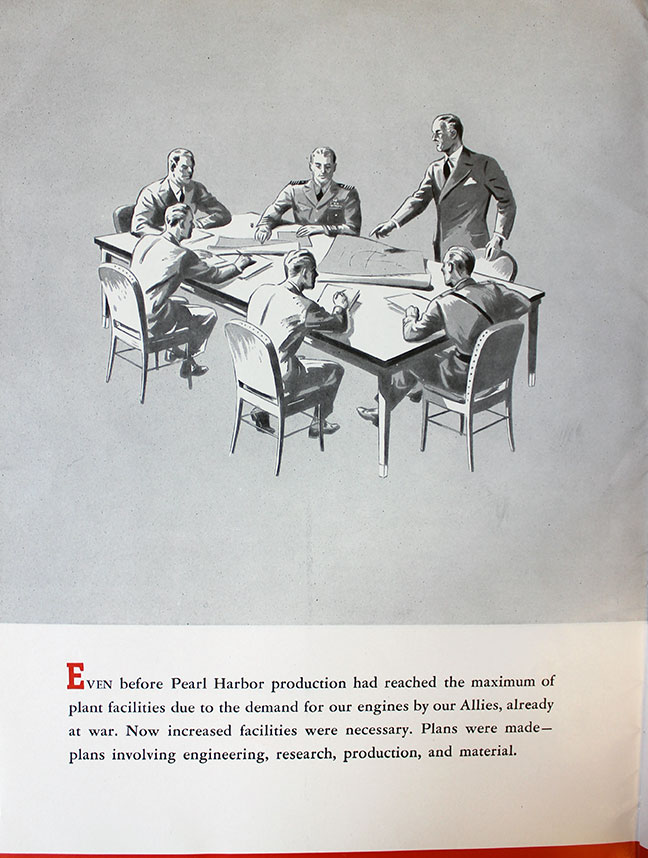
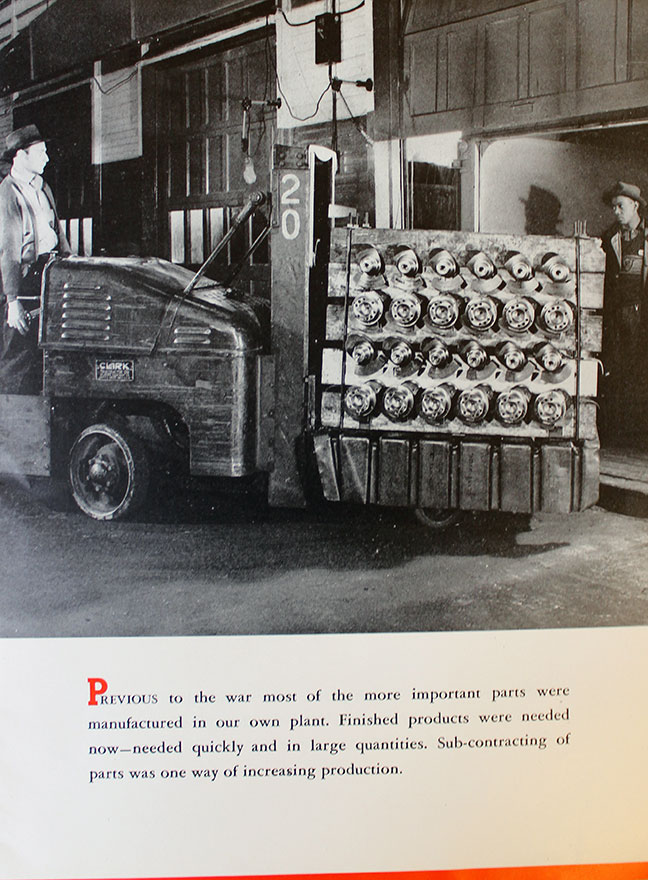
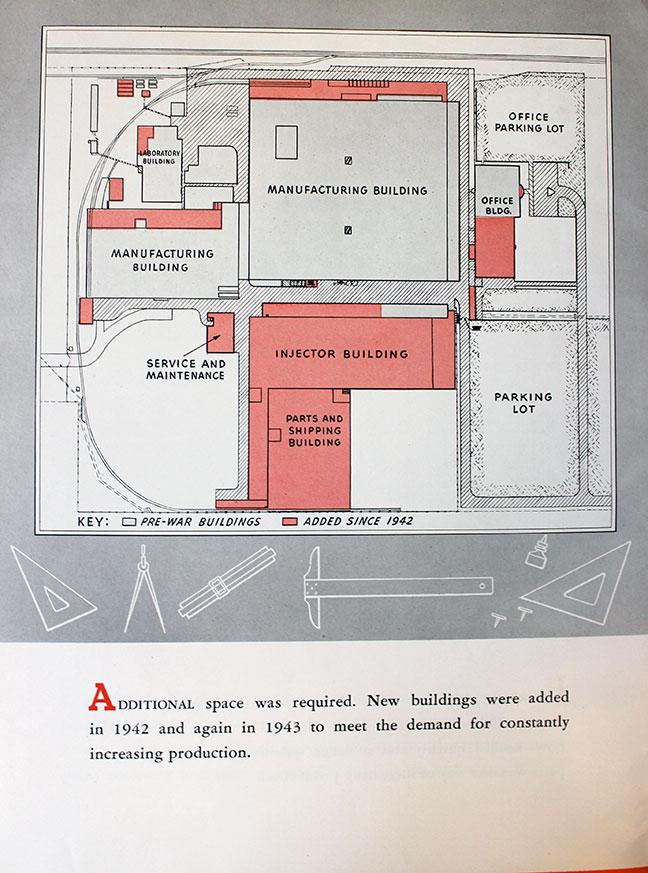
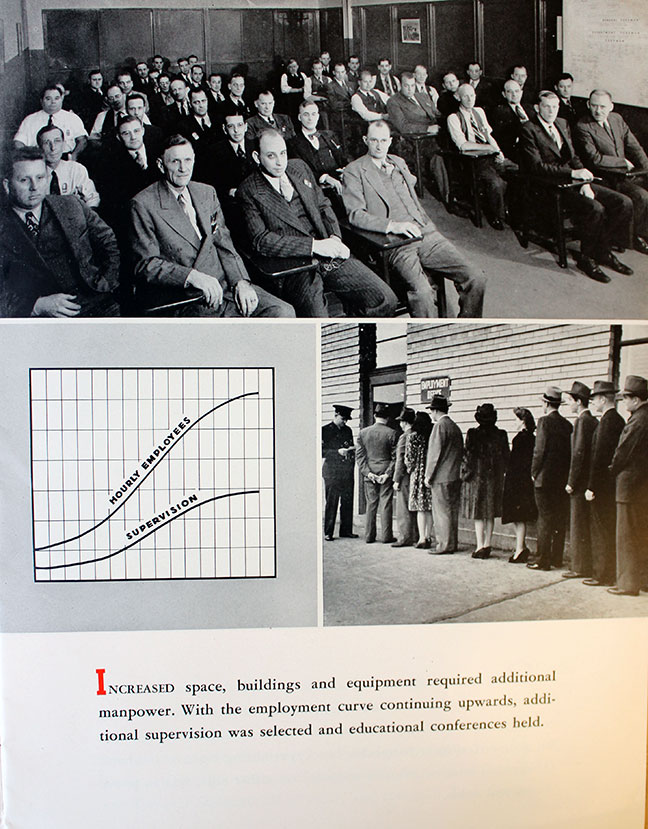
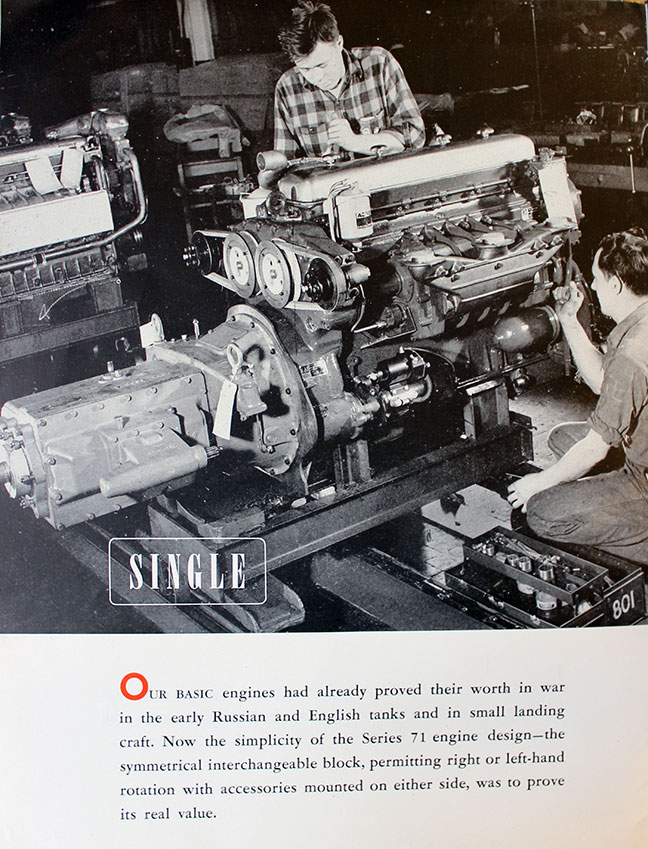
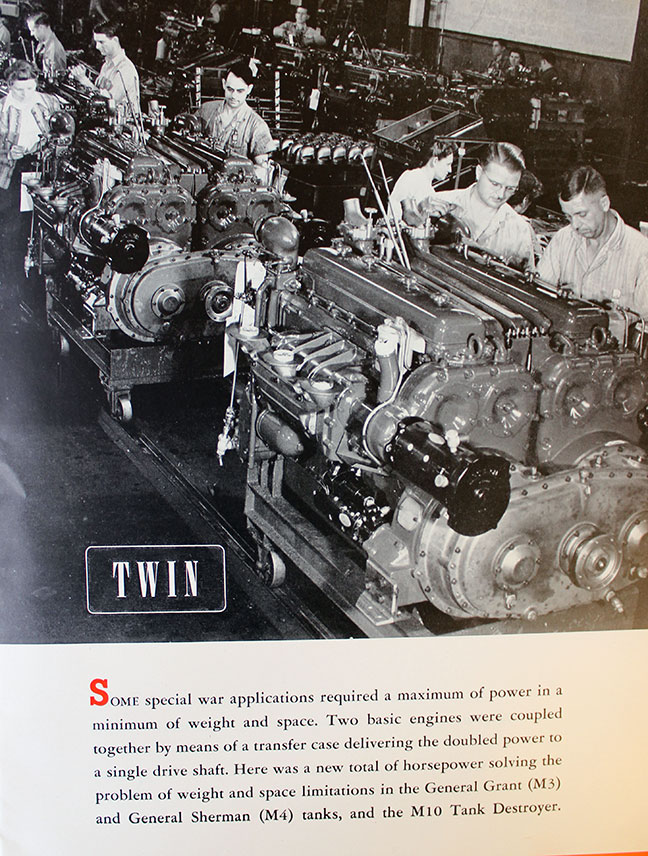
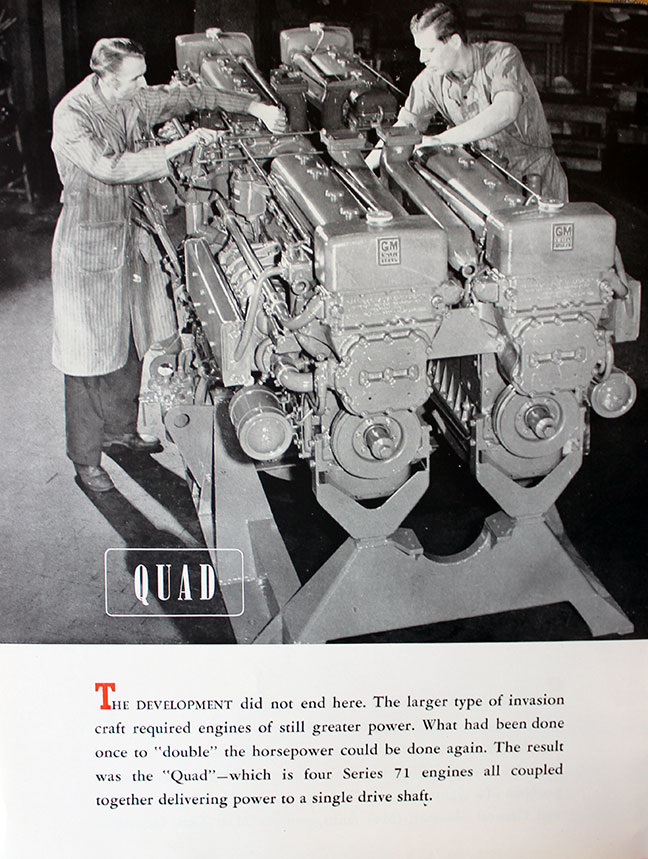
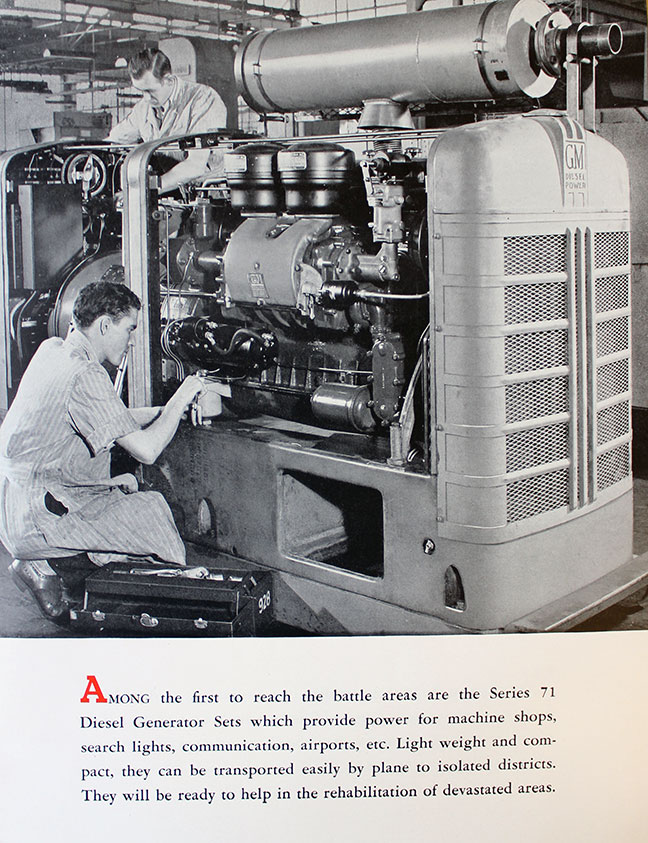
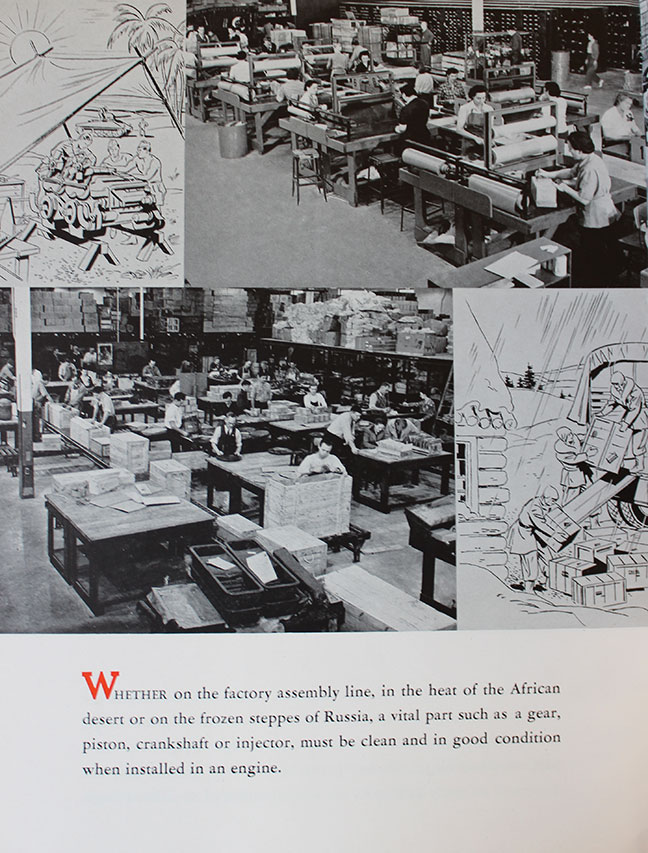
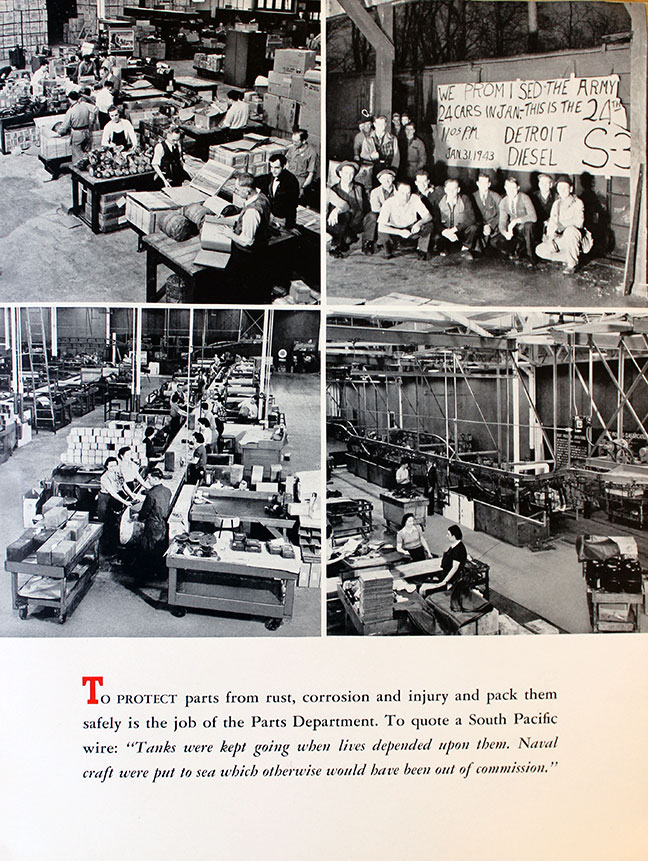
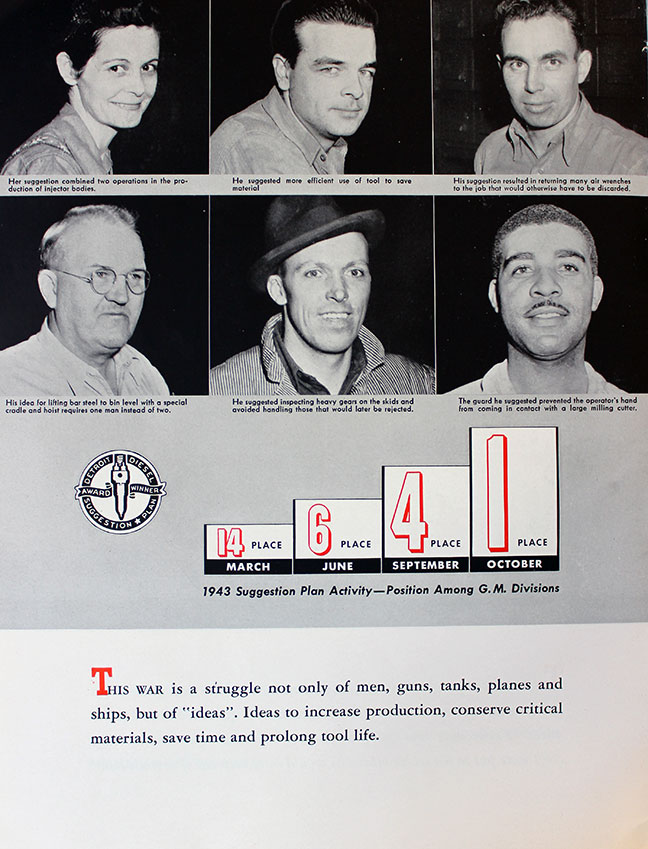
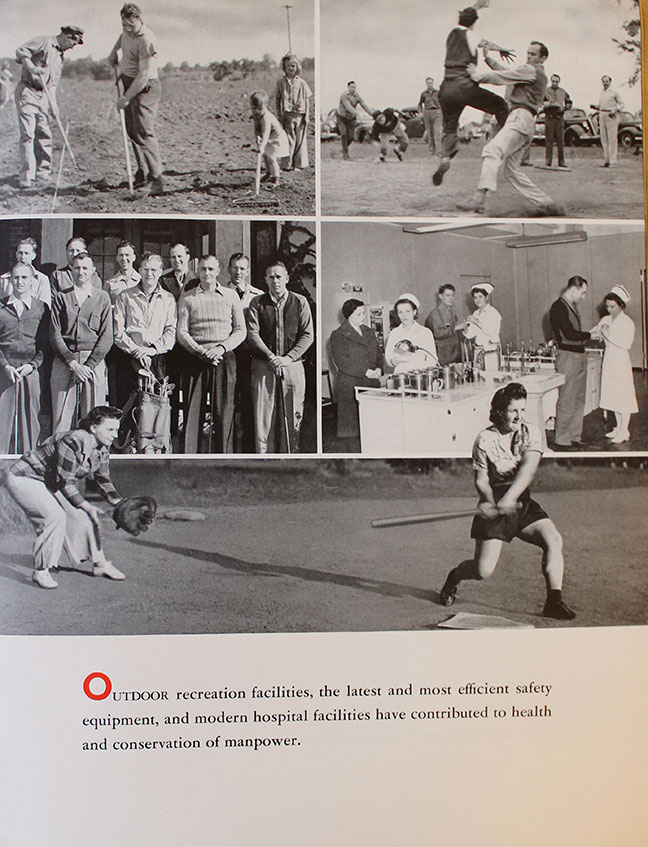
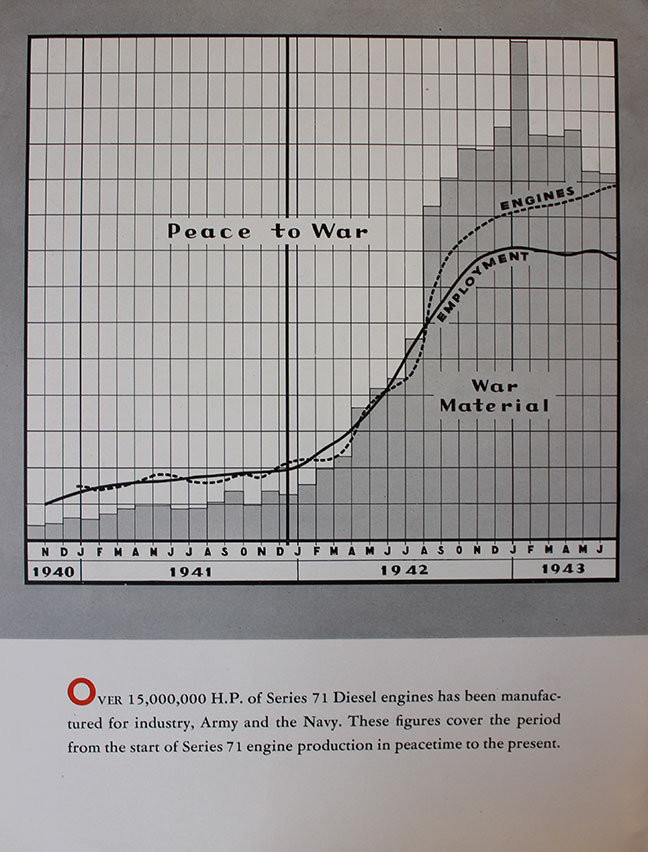
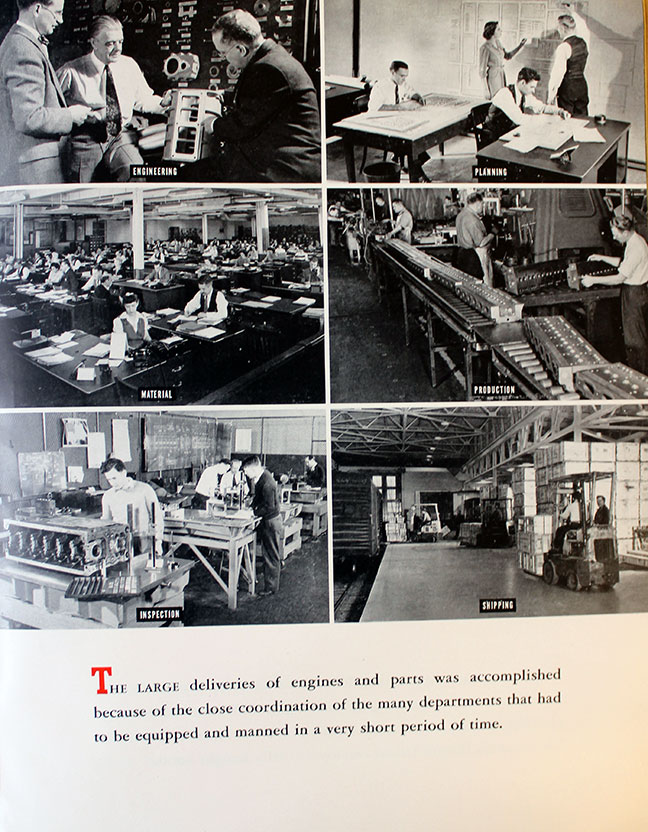
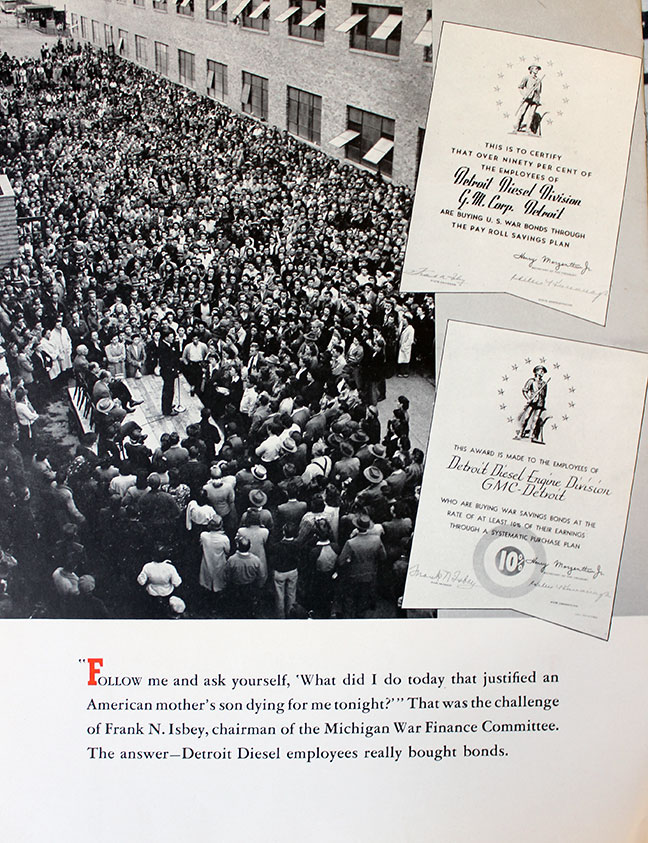
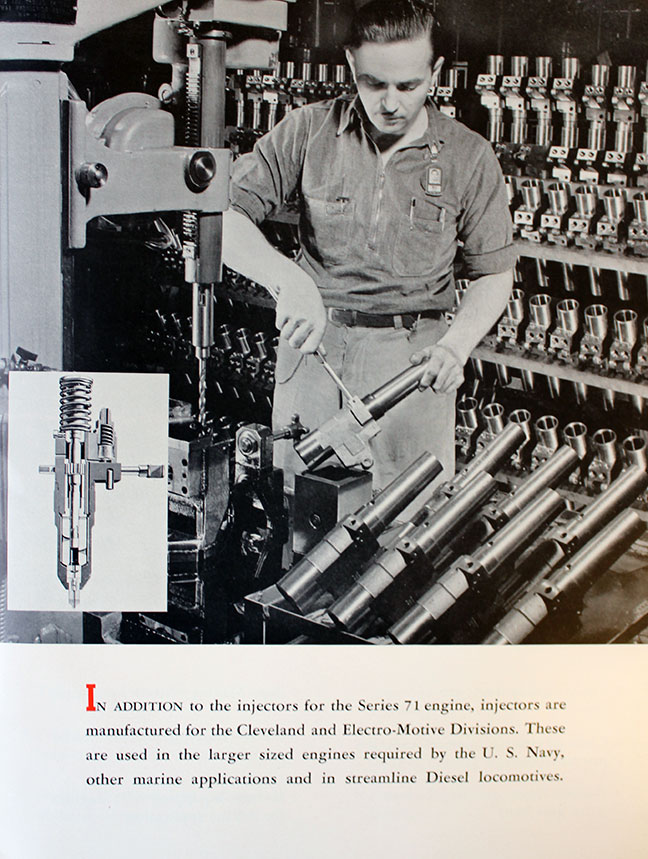
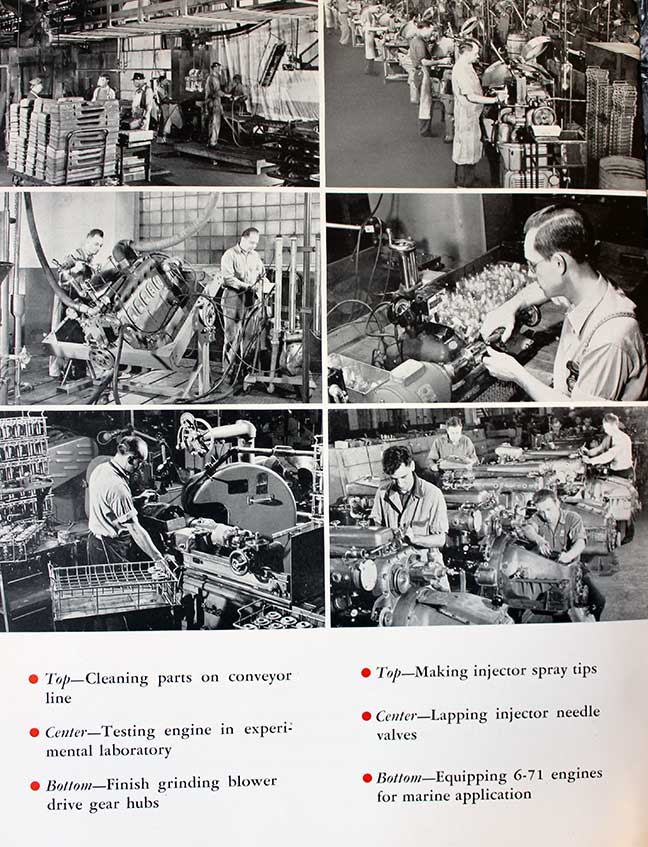
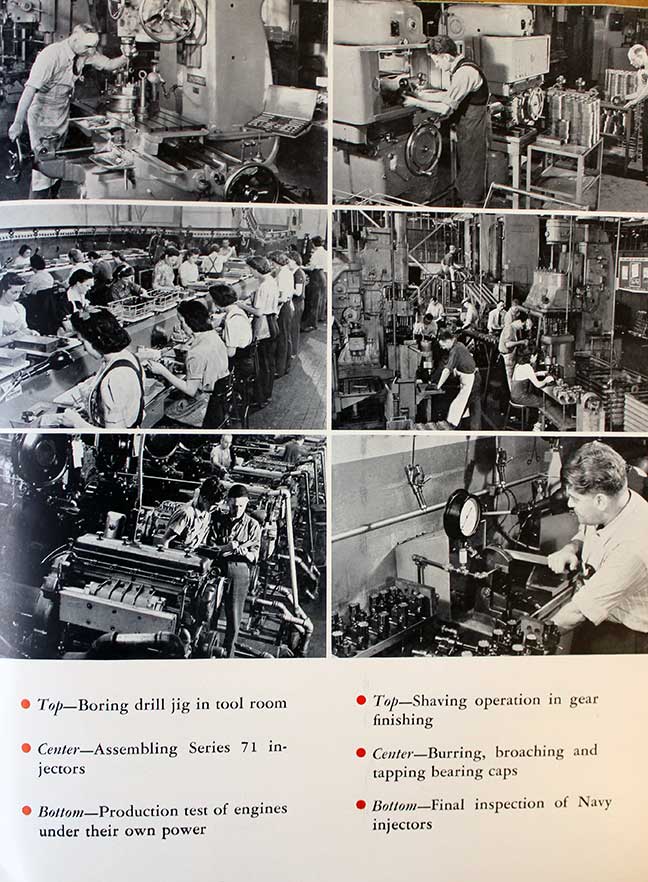
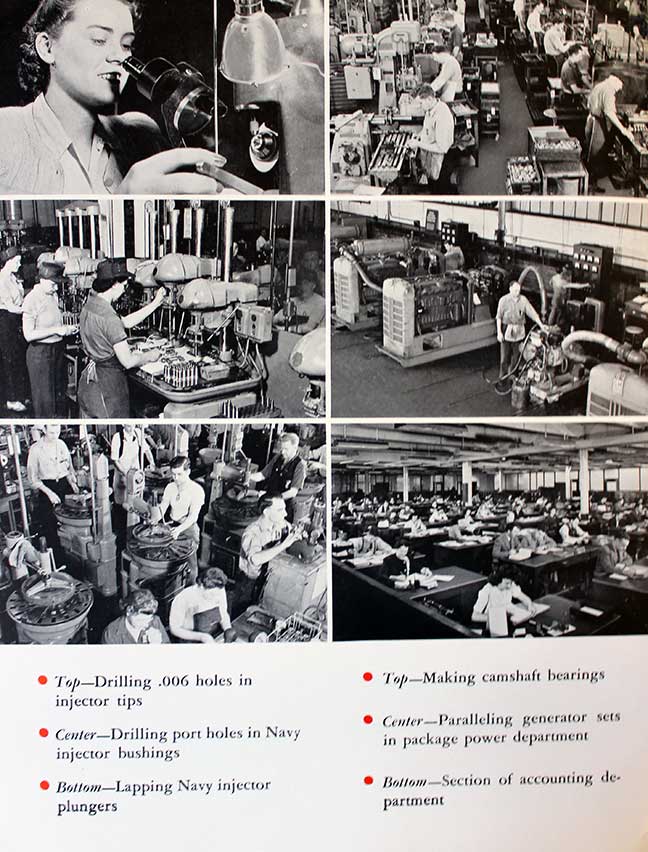
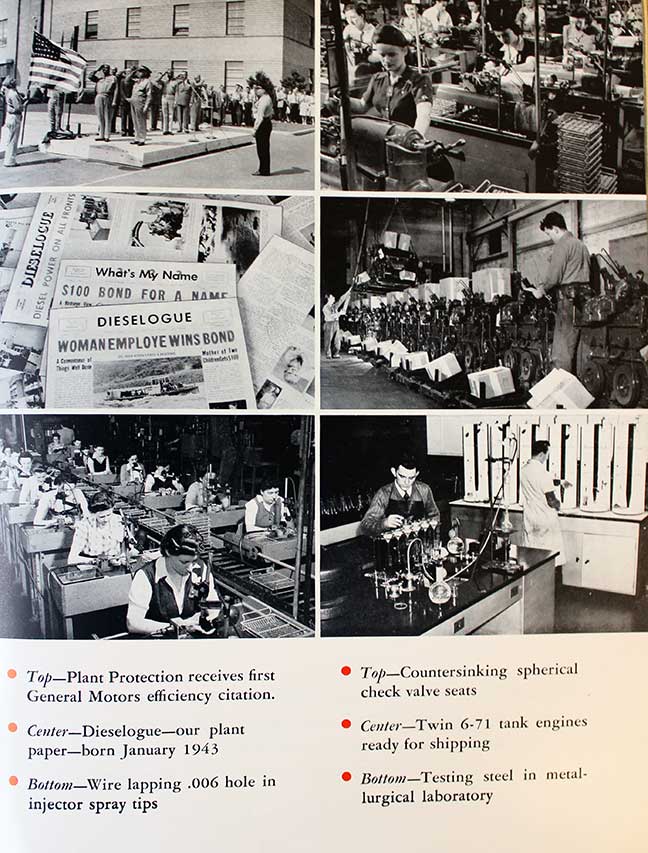
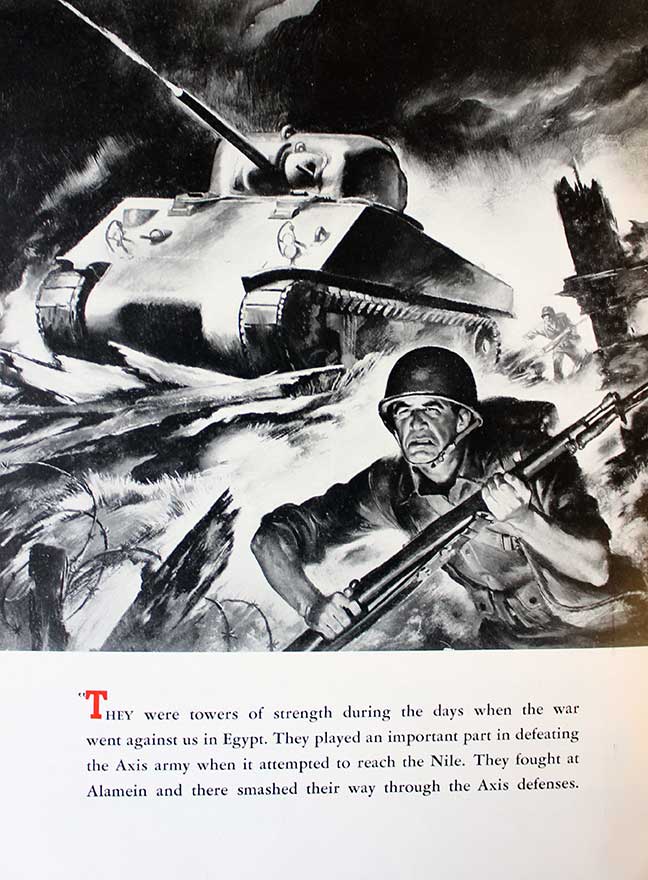
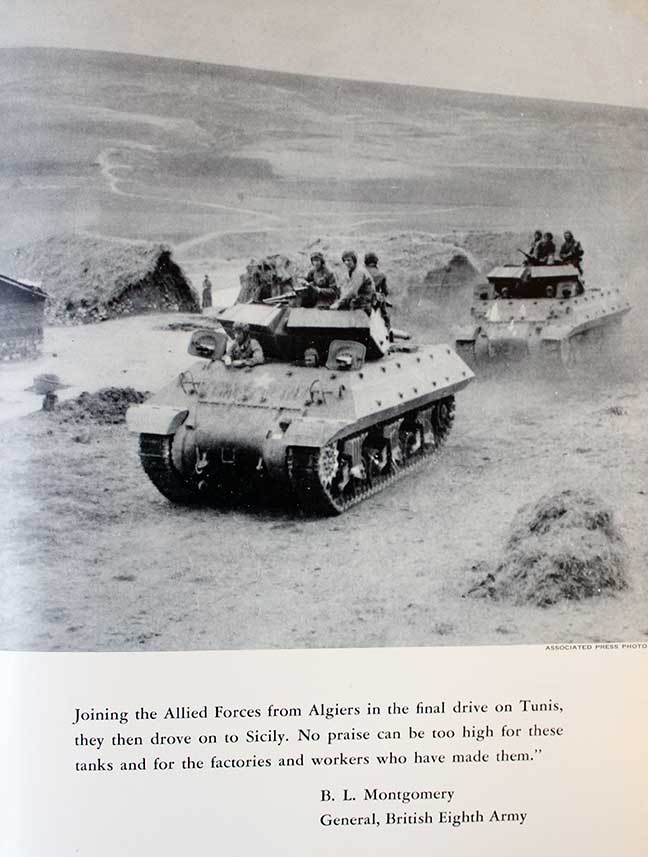
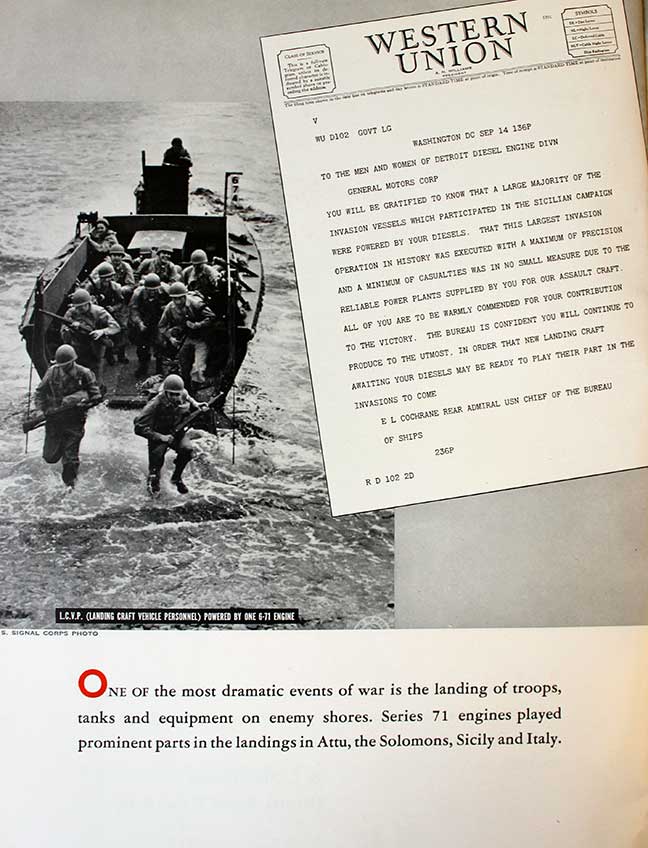
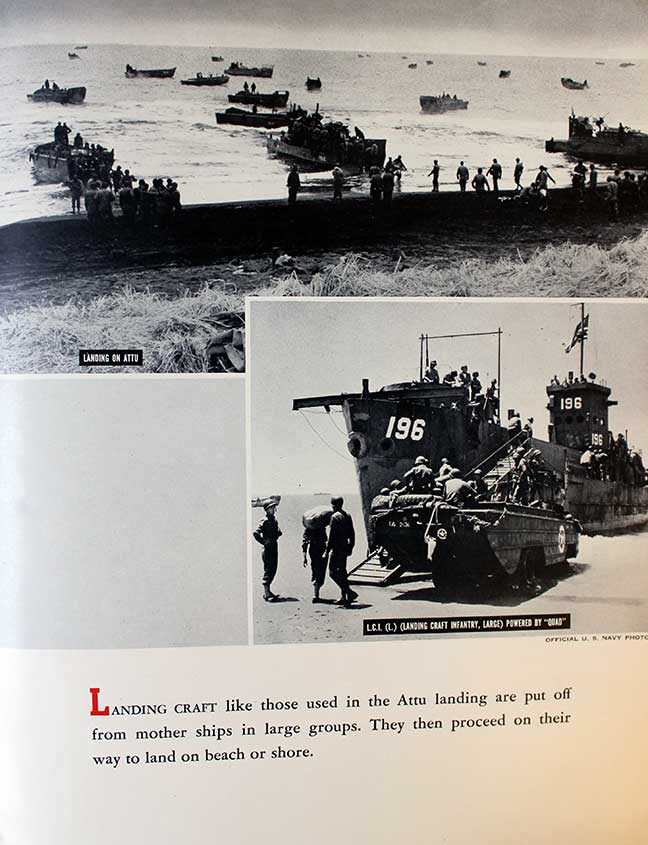
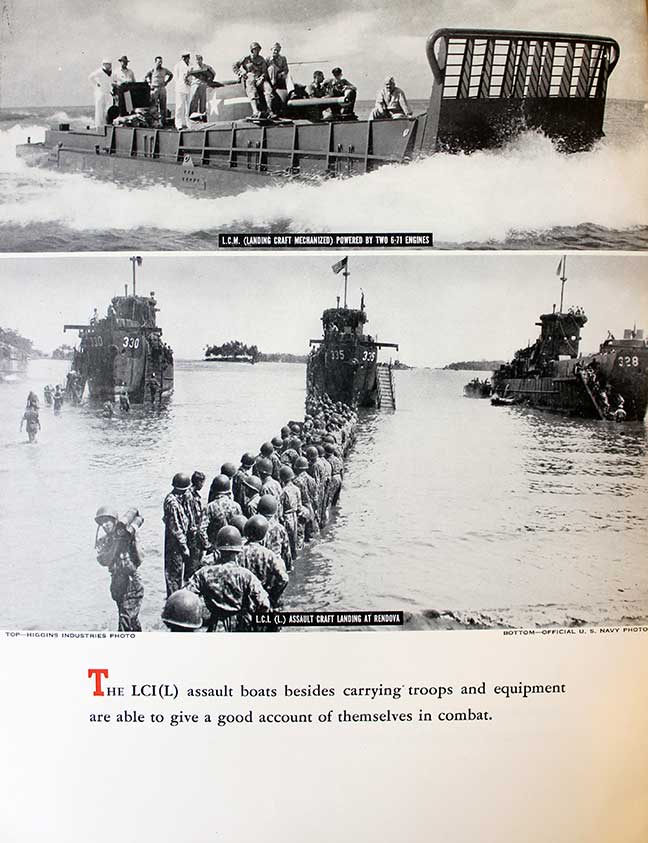
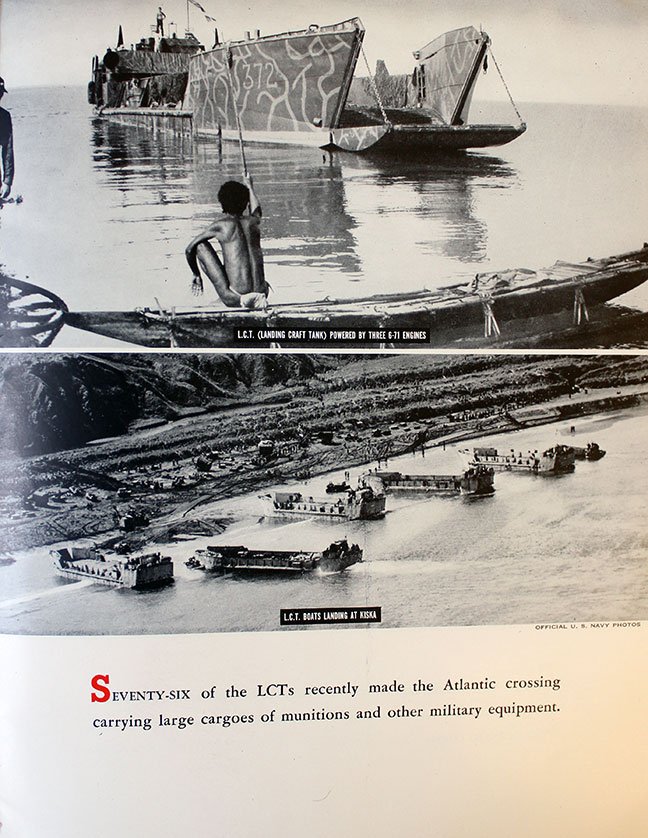
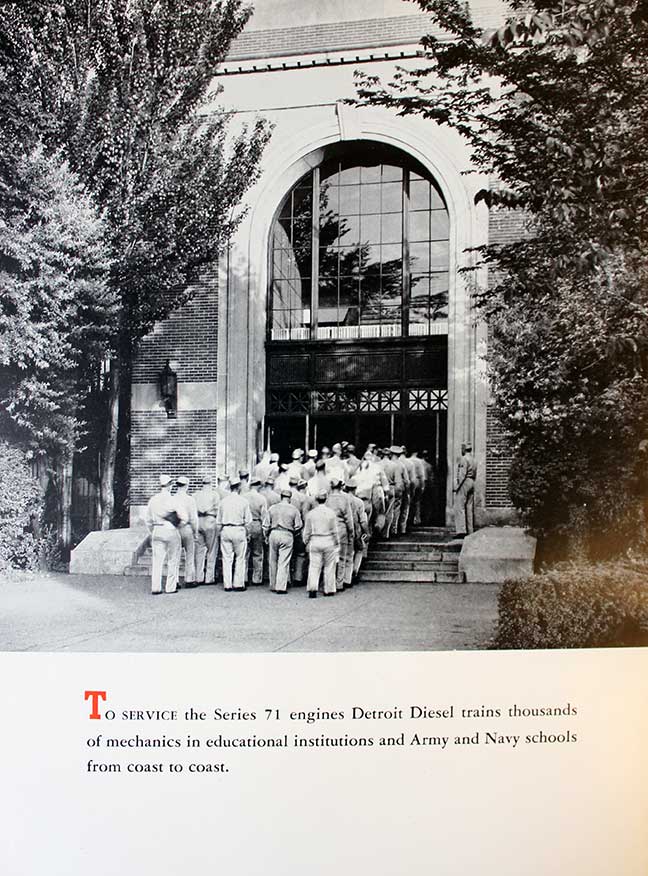
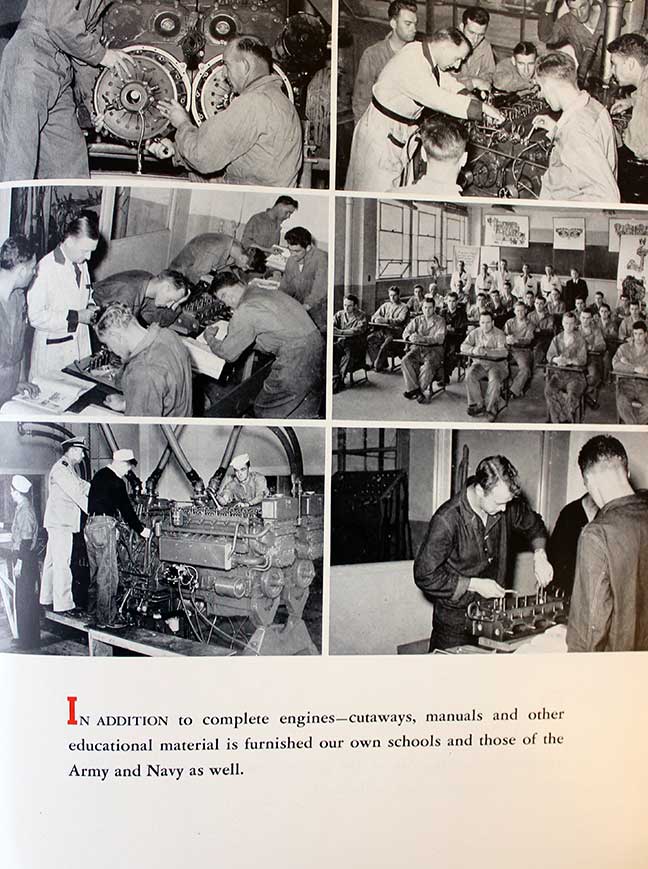
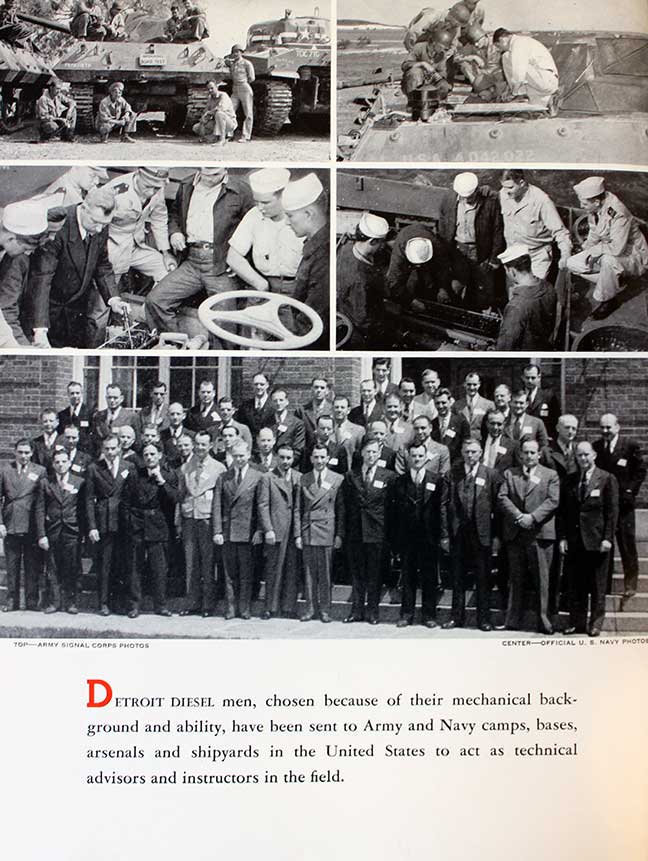
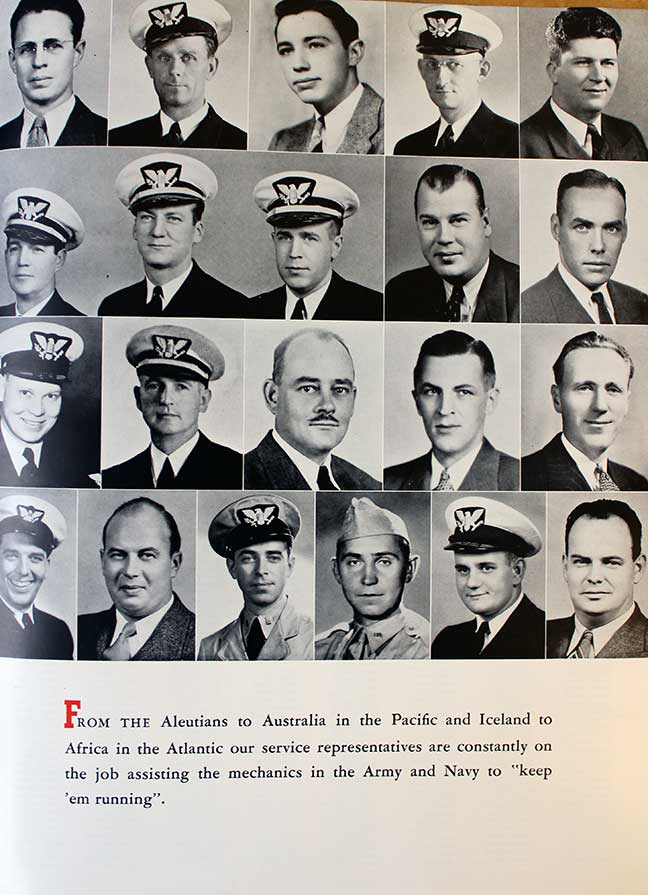
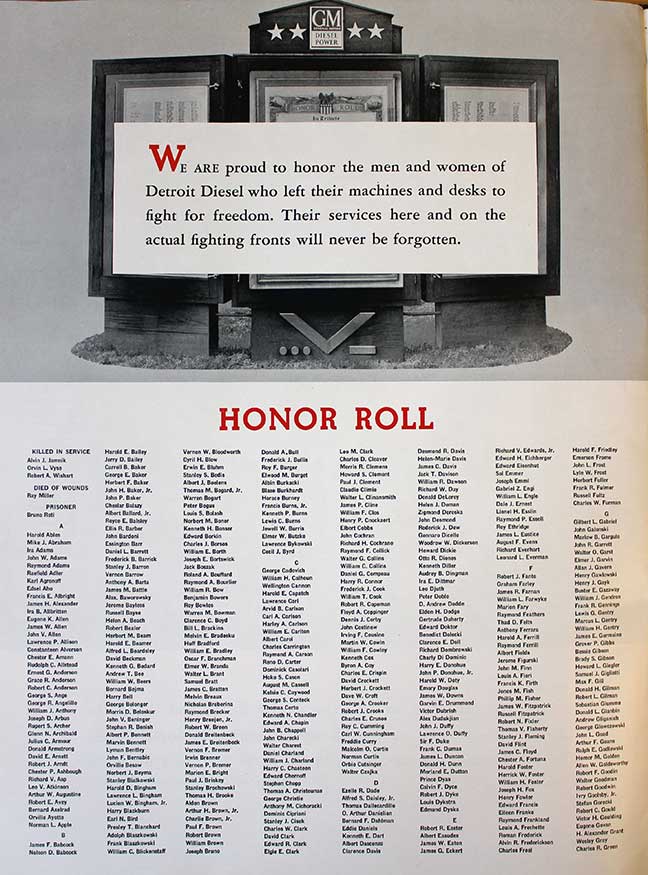
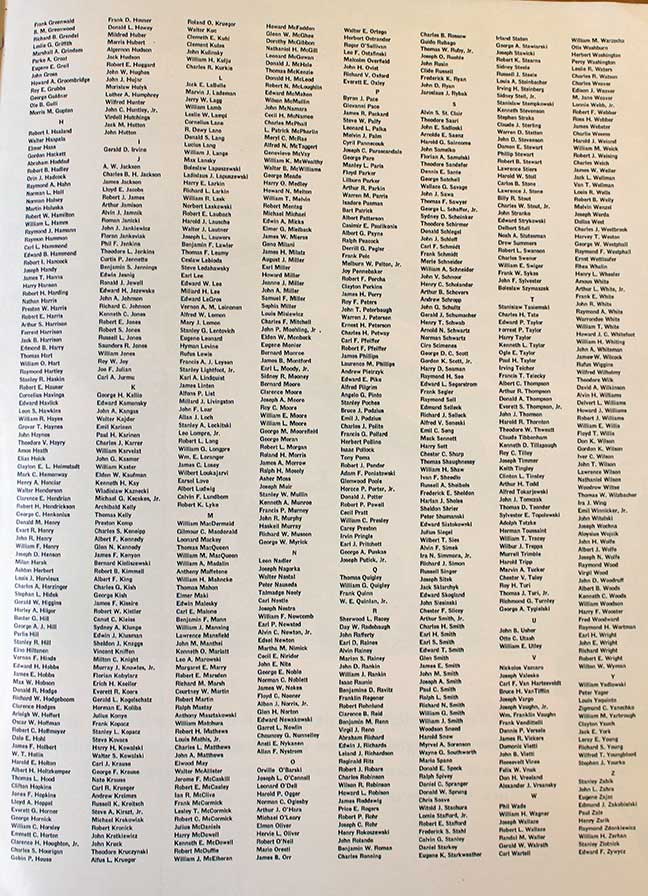
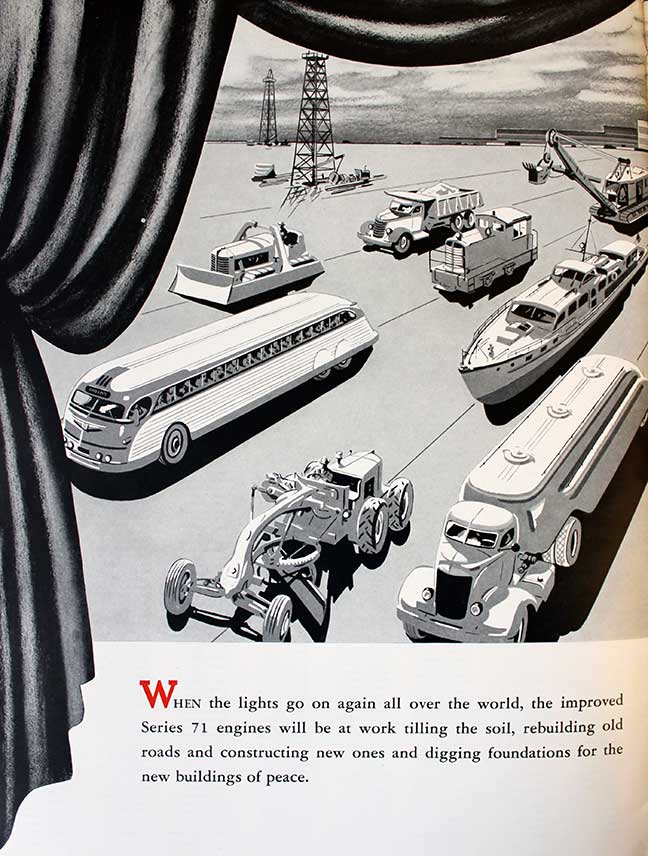
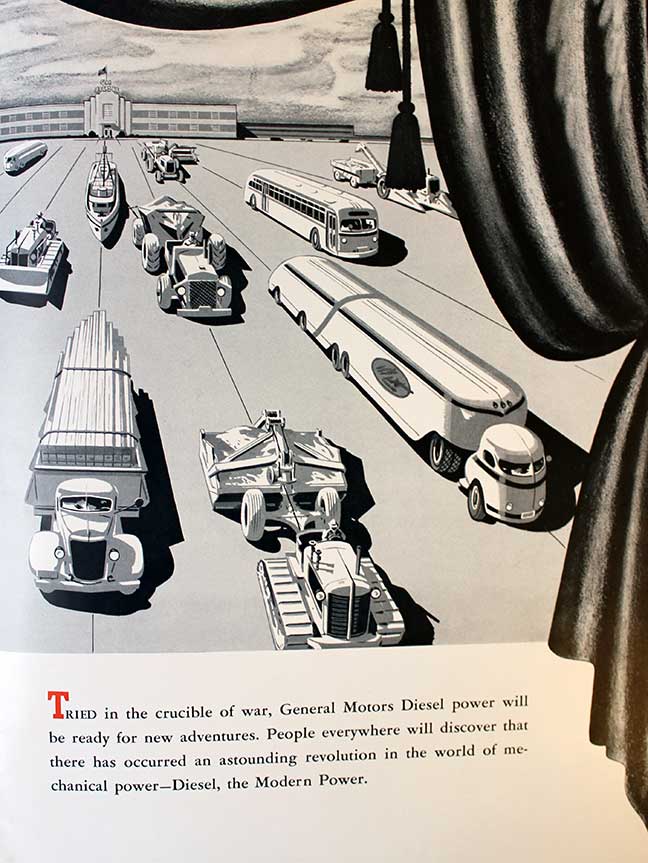
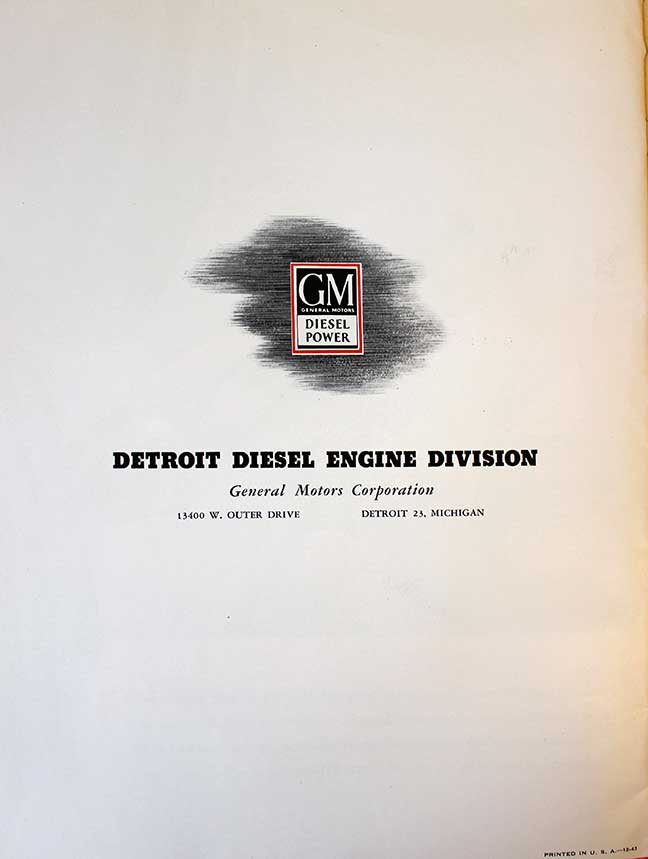
|






































































